Friday June 8th to Wednesday 4th July 2018
Savusavu
Once we were safely tied up in the small Copra Shed Marina in the town of Savusavu we recovered from the challenges of the sea and did all the necessaries after a long voyage – showers, cold beer, meal out, laundry, supermarket and buying local SIM cards to get WiFi. The mobile phone network in Fiji is excellent, at least on the larger islands although some of the more remote islands are still without coverage so, hedging our bets, Hugh bought a Vodaphone card and I bought a Digicel card. We also needed to get a cruising permit for our time in the islands, which meant several trips to the right office, only to be told to come back tomorrow.
Savusavu is a small, bustling town with a large ethnic Indian population who seem to own a majority of the shops.
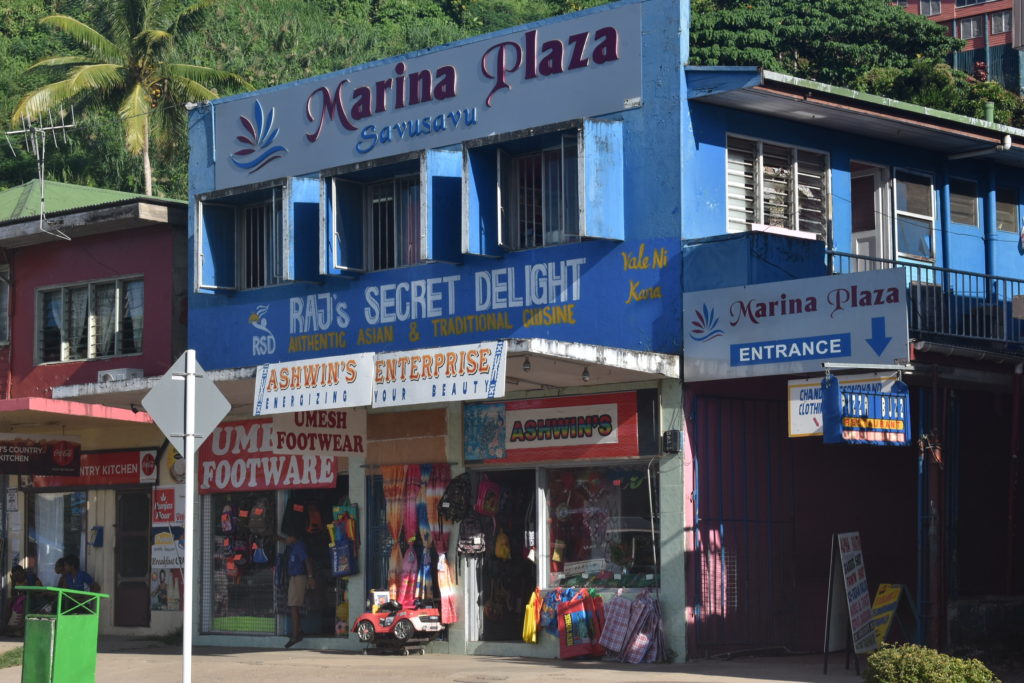
The Republic of Fiji is an archipelago of more than 330 islands in the middle of the South Pacific Ocean, formed 150 million years ago due to intense volcanic activity. It has been a melting pot of cultures as varied as Melanesian, Polynesian, Indian and British colonial throughout history.
The landmass of Fiji is divided between two major islands – Viti Levu and Vanua Levu with more than 87 percent of Fijian population living on these two islands. Human inhabitation on the islands dates back to the second millennium BC, with the Austronesians and later the Melanesians. Europeans first visited Fiji in the 17th Century, and colonized the island in 1874, the country gaining independence in 1970, and becoming a republic in 1987 after a series of coups, the most recent in 2006. Following this democratic elections were eventually held in 2014 but apparently tensions continue between indigenous Fijians who constitute 57% of the population and the 37% of Indo-Fijians.
Since Captain Hugh has been blogging regularly since our arrival in Fiji I will hand parts of this blog over to him:
‘There is a striking difference between the appearance of the locals here in what is Melanesia compared to those in Polynesia. In Fiji there is also the fact that a significant proportion of the population is of Indian descent (originally brought here by the British to work in the plantations) and this has given rise to great tension. Much of the commercial activity seems to be run by those from the Indian derived community. Large billboards proclaim that Fiji is best when Fijians come together. Life is clearly more complex than we see with our superficial interactions.’
Early morning and in the afternoon schoolchildren head off to school from the busy bus terminal:
One morning we caught a bus across the island with cruiser friends to Labasa, the main town on Vanua Levu (the second largest of Fiji’s islands).
There wasn’t much to see from a tourist point of view apart from a colourful Hindu temple, but we enjoyed the bus ride across the island, looked round the shops and had a walk along the river bank to a small village.
As we wandered around the village we got a lot of friendly ‘Bula’s (hello in Fijian) called out to us. Only later did we realise that Fijian etiquette meant we should have met the chief or headman of the village first to ask permission to look around.
‘Fiji seems to be a happy place, judging by the friendly interactions we have. Everyone is keen to say Bula and to hear where we are from. Perhaps its the kava. This is a disgusting looking sludgy brown liquid made from the roots of the kava plant that imparts a sense of wellbeing when it is drunk. The price of kava has rocketed since the last tropical storm hit supplies and the root now fetches 120 dollars a kilo (about £40). On the islands it is required that you obtain the permission of the tribal chief to anchor in their territory and you do this at a special ceremony at which you present around half a kilo of kava root. In return you may be adopted by a family and given meals and be shown around.’
Before we left Savusavu to sail round some of the smaller islands, we went to the local market to buy our own bundles of kava, the dried root of yaqona, the pepper plant. We ended up being taken to the home of a kava wholesaler/exporter who weighed out eight bundles of 400grams for us (we ended up subdividing these as time went on into ever smaller bundles).
We also made sure we had enough cases of Fiji Gold, the local lager, on board:
Our plan was to spend about two months in Fiji sailing around some of the smaller islands, but since there are 333 islands making up Fiji we would only be able to scratch the surface. Boats based in New Zealand return year after year as there is so much to see and do and the occasional boat will stay on through the cyclone season riding out any strong winds in hurricane holes – bays protected from the wind, tied up in the mangroves or in marinas designed as hurricane shelters where boats can be tied down in pits.
After a week in Savusavu, stocks replenished from the local supermarkets and vegetable market and our kava on board, we headed 40 miles east along the coast, an easy day sail, with friends on Hakuna Matata and Loupan.
Viani Bay
We dropped anchor by a small settlement on Viani Bay where there is great scuba diving, and to meet up with Rick and Amanda on Duplicat.
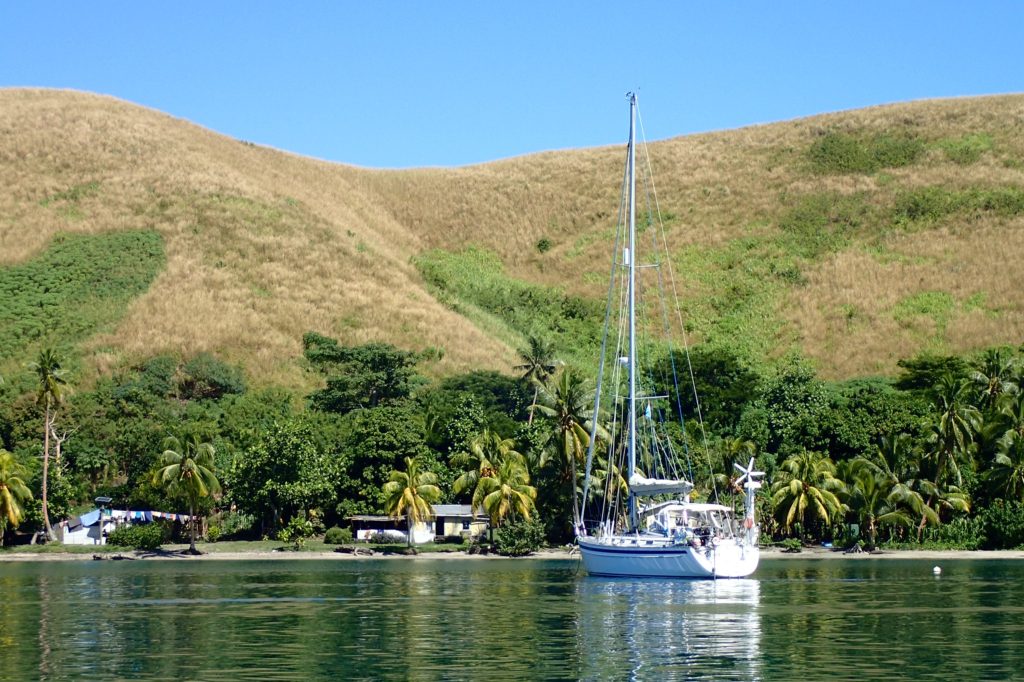
After a few days quite a group of boats had gathered, including Reto and Angela on SheSan and Mark and Marjo on Osprey. Even more boats piled into the tiny bay, dropping anchor on the coral below – which makes for a noisy night as the anchor chain drags on the rough surface, let alone the damage to the coral. We met a couple from Dartmouth on their ketch, Emily Morgan, and it turned out we had a mutual friend, Pete, who we’ve known for many years since I met him skiing in 2001… it’s a small world.
Viani Bay has a reputation as a spectacular place for scuba diving and Willie, a local man, took us out to two dive sites – The Great White Wall and The Ledges. At the first site two manta rays came over to check us out as we arrived. We had two lovely dives with colourful hard and soft corals and lots of small reef fish.
The locals organised a meal for all the yachties at anchor by their settlement. There are just 12 houses there and everyone is related. There were lots of children.. the younger ones go to school by boat every day to the primary school across the bay whilst the older ones are weekly borders at school on the island of Taveuni across the adjoining straits. They all love having their photos taken!
The meal was a ‘lovo’ a traditional form of Fijian cooking in an underground oven. A pit of about two foot deep is dug, coconut husks are placed in the bottom and set on fire, a layer of stones added, then meat and vegetables such as taro and cassava, both starchy roots, are layered on top and covered with banana or coconut leaves. After two hours the food is ready to be eaten. We were presented with quite a spread including lots of different salads as well as Hugh’s favourite… corned beef.
They also brewed up kava in the large wooden bowl. The powdered root is mixed with water and strained, making a drink they call grog. It is drunk from a communal cup made from a coconut shell and should be downed in one, with the participants chanting ‘maca’ (meaning empty and pronounced maatha) and clapping three times afterwards. We had our first taste…
Apart from slightly tingling lips and a feeling of contentment, which might have been the beer and good company, I’m not convinced it had a great effect on me. Reto was more susceptible:
Taveuni
From Viani Bay we crossed the straits over to the island of Taveuni and anchored outside the Paradise Resort, enjoying a few days of ‘civilisation’ including swimming in the pool and a delicious curry at the restaurant.
The two Rhodesian ridgebacks at the resort were glad to walk with us and other cruisers to the nearby shopping centre.
In the resort there was a framed photo of Chief Ratu Udre Udre on their wall:
The first Europeans often referred to Fiji as Cannibal Island due to the culture of cannibalism that was prevalent among the native tribes at the time. 19th Century Fijian chief Rate Udre Udre has been given the epithet The Most Prolific Cannibal of All Time by the Guinness Book of World Records. He is said to have consumed between 872 and 999 humans during his lifetime.
Vanua Balavu
It was an overnight motor sail to the island of Vanua Balavu, a 12 mile long, curved island surrounded by a huge lagoon and bounded by an enclosing coral reef. We drooped anchor by Daliconi village on the west side and did our first sevusevu here. We all, men included, dressed appropriately in sulus (sarongs) with shoulders covered and no hats. The chief solemnly accepted our gifts of bundles of kava and recited a blessing and welcoming words in Fijian. There was clapping of cupped hands and we were formally accepted as part of the village, granted permission to wander around and to anchor and swim in their bay.
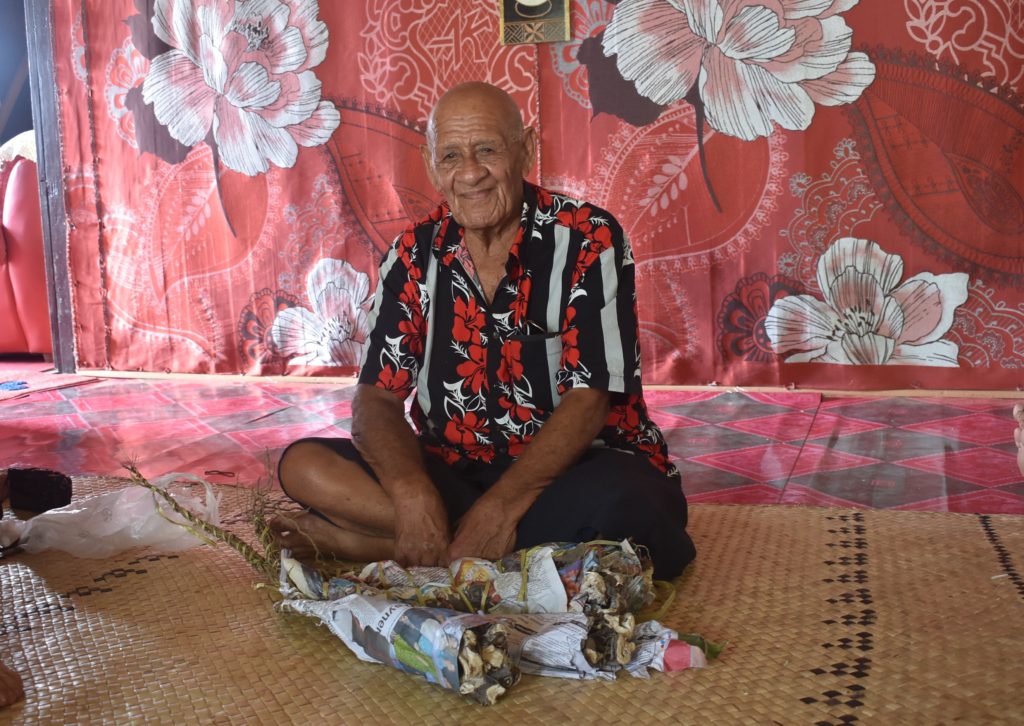
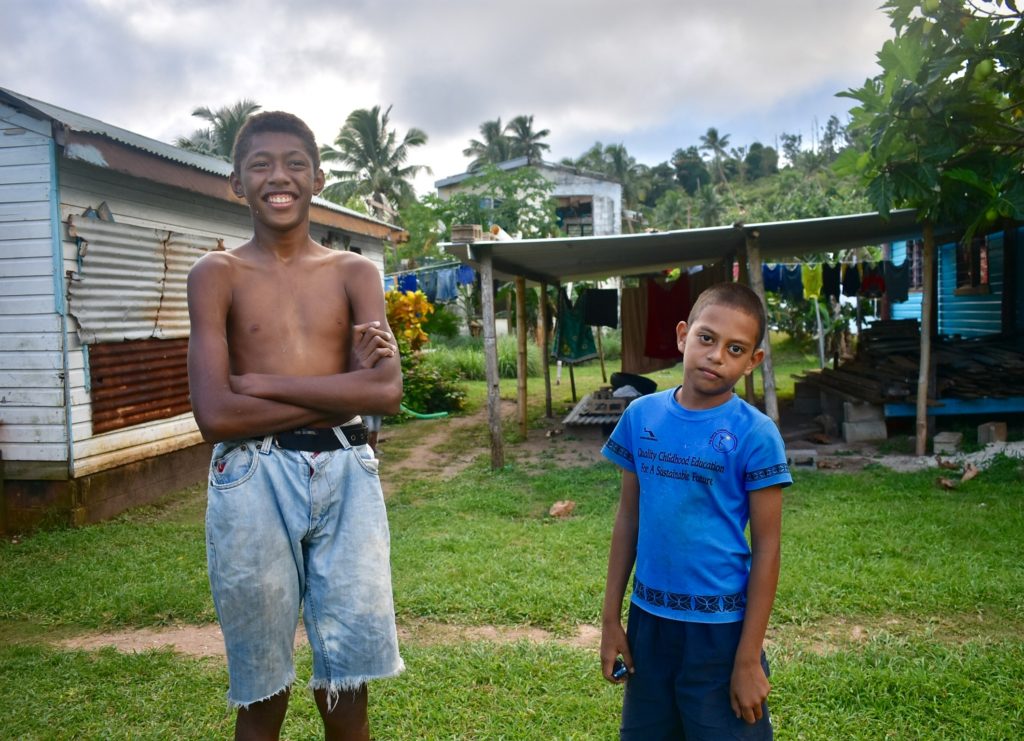
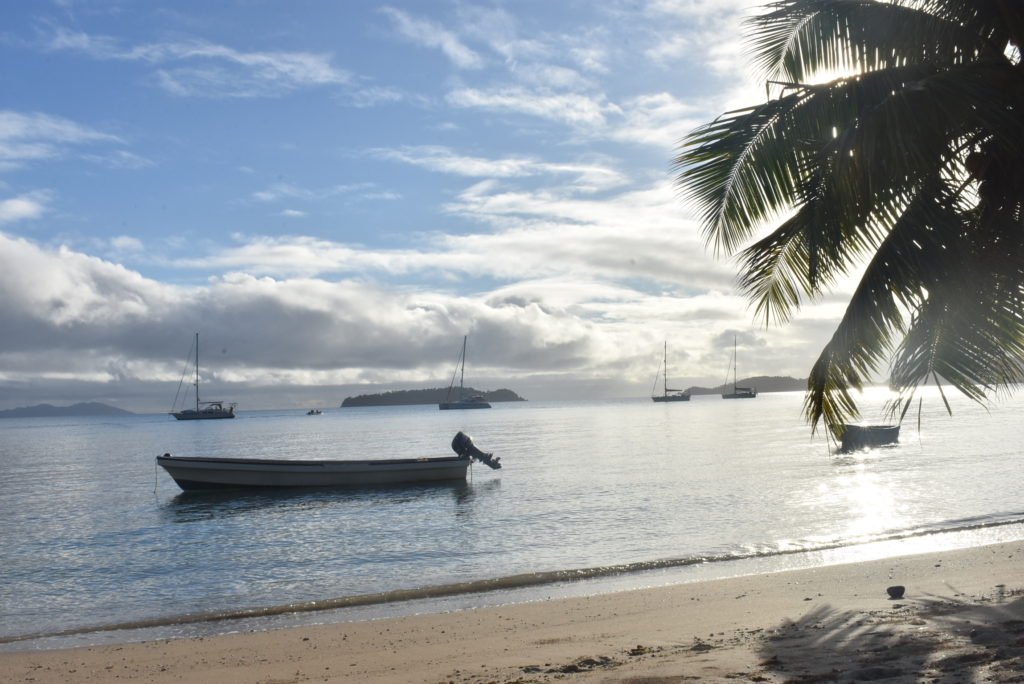
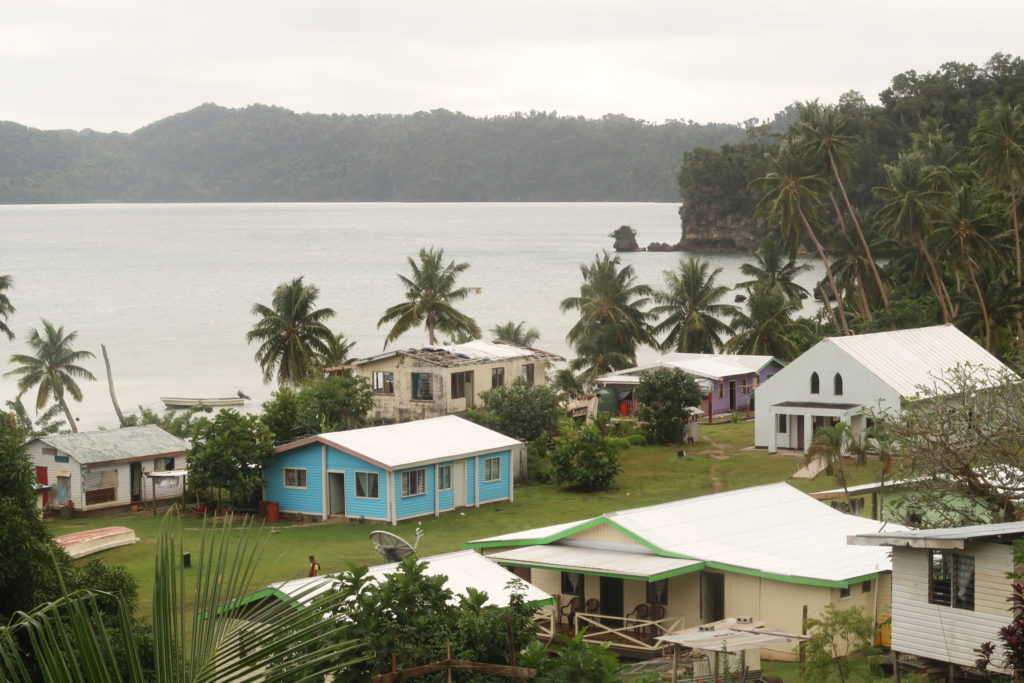
The following day it rained… heavily and continuously all day long. This is not supposed to happen in paradise. We cancelled the planned walk and caught up with jobs on Vega. In the evening our Swedish friends on Loupan and Hakuna Matata invited us on board for a Swedish Midsummer meal, and we had a jolly time enjoying various national dishes which translated as Old Man’s Mess (potato, egg and anchovy on rye bread), Jensen’s Surprise (potato cooked with onion and anchovy) and Ingvar’s Consolation (beef, marinated in soy sauce with pineapple… although not classic Swedish it was delicious anyway)…… but regretfully no fermented herring. After copious amounts of beer, wine, aqua vita and brandy we were given a lift back to Vega.
On the Sunday we attended church – mainly for the singing, the congregation belting out the hymns with perfect harmonies, the men singing with rich, deep bases and the women complementing with layers of both sweet and shrill voices. The minister gave a long sermon, building up to a climax of hellfire and damnation… although it was in Fijian it was easy to get the gist of. He also welcomed us in English and blessed our voyage, inviting us to speak in return. Hugh responded thanking them for their welcome and praising the village and the beauty of their country.
After church we were invited to lunch with the pastor. Platefuls of fish cooked in different sauces and dishes of boiled taro and cassava. All the villagers contribute food for the minister’s Sunday lunch when he entertains visitors to the village. The women will spend the Saturday preparing food as work is strictly forbidden on a Sunday, the sabbath being for church, family and relaxation. There are church services at 4am and 10am on a Sunday although attendance at the earlier one is voluntary and sparse, we understood.
It is the women who prepare the food but they usually sit down to eat after the men have finished. They appear at first impression to have a long way to go in terms of sexual equality. The women we met in the villages might be school teachers or run the local shop. There are many bright and ambitious young ones planning to go on to tertiary education as well as older women who had travelled the world and owned property in the capital, Suva, and overseas. I spoke to some women who seemed happy with their simple, mutually supportive lives in the village but others who had given up work they enjoyed to return to the village to marry and rear children in what could be seen as a very limited and restricted society. Many of the more successful villagers, having made careers in the capital or overseas, return to the village of their ‘clan’ to build a large house for their holidays, the property remaining empty most of the year, or one they retire to in old age. In contrast we met two brothers in the early 30s, one working in the capital Suva, the other preferring the live the simple village life where the land provides richly in terms of fruit, vegetables, pigs and chickens, there are fish in the sea and plenty of time for relaxation. The men do seem to have it easy… with kava drinking high on the list of favourite activities.
We spent almost two weeks in Vanua Balavu, in four different anchorages.
The magical Bay of Islands has crystal clear turquoise water and we navigated around mushroom shaped islets of limestone covered with dense vegetation, to drop anchor in a tiny bay. There were thousands of fruit bats roosting in the trees which noisily took flight at dusk.
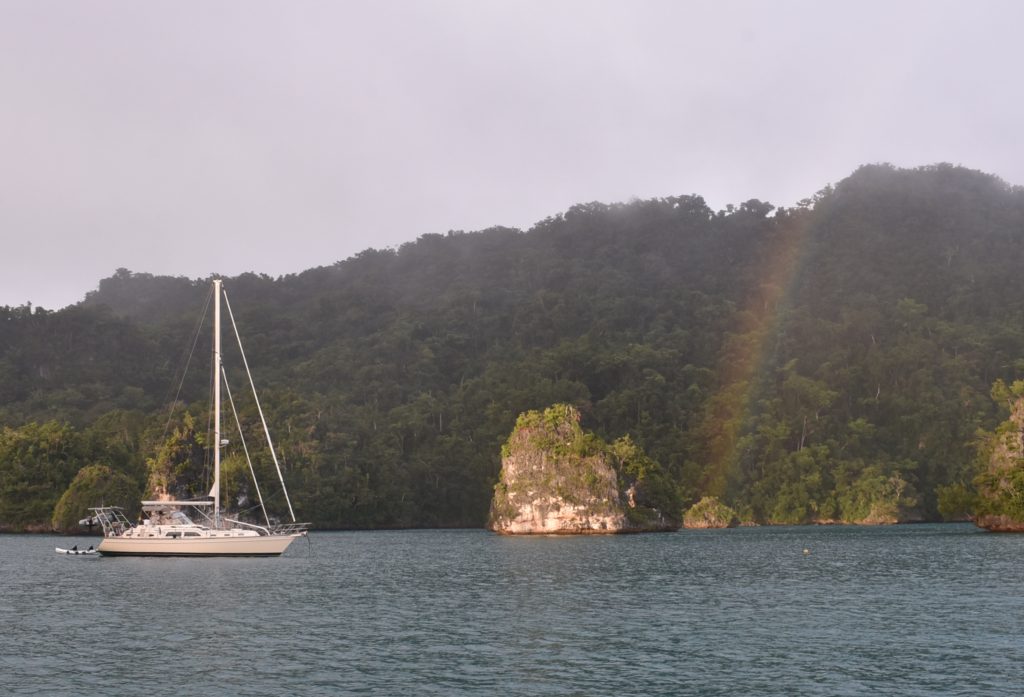
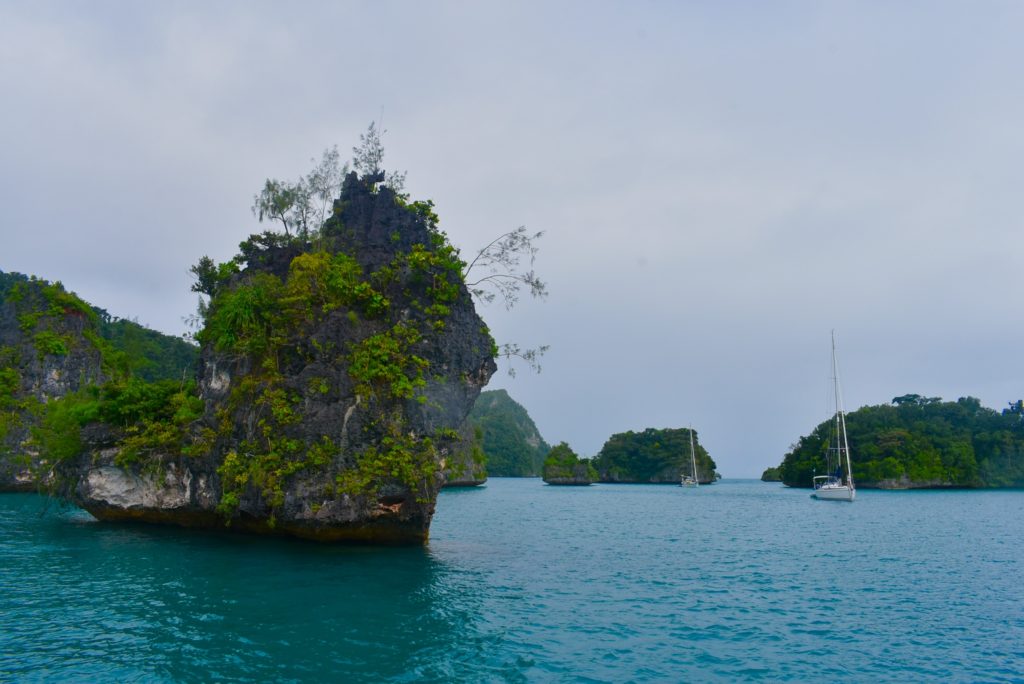
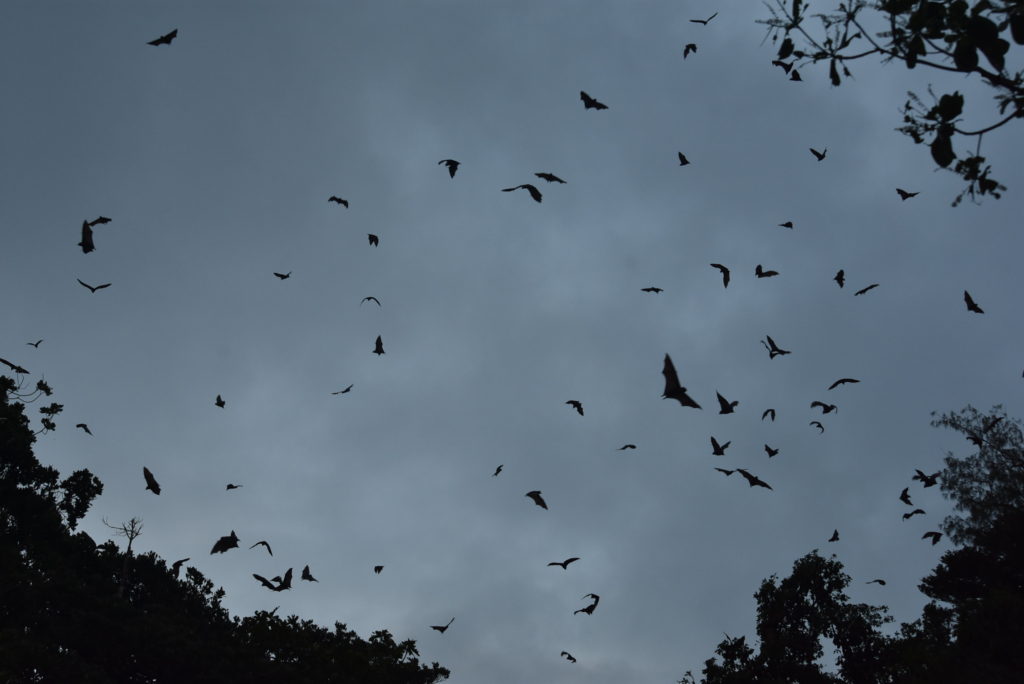
Snorkelling in the Bay of Islands:
The Bay of Islands from afar:
We moved on to Batuvu Harbour at the north of the island and climbed the 271 steps to the plantation above:
Ingvar, Tuija, Ulla, Pelle and Hugh:
Then on to the more sheltered Little Bay…
‘With strong winds expected we needed to find shelter somewhere in a bay offering a good anchorage and protection from the 30+ knot winds forecast, and Little Bay at the top of the Island of Vanua Balavu offered this. We found ourselves in a small group of five yachts.
This is in the northern Lau group of islands on the eastern side of Fiji. The islands are of both volcanic and coral limestone origin; the north part of Vanua Balavu is limestone, the south of the island is volcanic. The bay is long and narrow but only the seaward end is accessible to yachts, the inland part having a narrow, shallow shelf leading into it. The bay is bounded by precipitous limestone cliffs that are covered in dense forest. Deep calls which sound like howler monkeys echo around the forest. The locals say these are the ghosts of Fijians come to haunt the yachties but in fact they are made by the Golden Dove. There are sandy beaches, turquoise blue water and the reefs at the entrance ensure a smooth anchorage. The depth to anchor in is a fairly consistent 10 meters and the bottom is firm, fine sand with a mud like consistency. As anchorages go this is about as good as it gets …’
The anchorage at ‘Little Bay’, known to the locals as Masomo Bay:
‘The “caretaker” of the anchorage, Tui, and his wife Bui live around the headland where they rent a smallholding from the village company that owns the land. Coconut, banana and papaya grow in profusion, pigs and chickens are raised (the wild pigs descended from escapees in storm Winston are prized) and various root vegetables are grown. Tui is allowed to act as village representative and undertake the Sevusevu ceremony to allow yachties to stay in the village area, although the four yachts in our group that came in together opted to go to the village with Tui to do the ceremony with the chief.
‘The nearest village is an hour’s walk along the beach. There used to be a more direct inland track but this was obstructed by fallen trees as a result of Tropical Storm Winston in 2016. The village is still recovering from Winston but most of the civic buildings have new roofs and, thanks to the NZ Government, there is a brand new primary school and staff housing. Some villagers work in the capital Suva and send money home, some are supported by other relatives and all supplement their food with fishing, growing vegetables and harvesting fruit….’
Tui at Mavana village:
Chief Kolinio Waqavonovono accepting our kava at sevusevu:
Sevusevu in the community hall:
The school, financed by New Zealand:
The village shop:
…. and shopkeeper:
Ulla and Pelle trying to get a decent mobile phone signal:
The village had a prosperous air. Fiji’s former prime minister had been brought up here and Tui showed us the large house he had built in the village, closed up as the retired minister had gone for medical treatment in India.
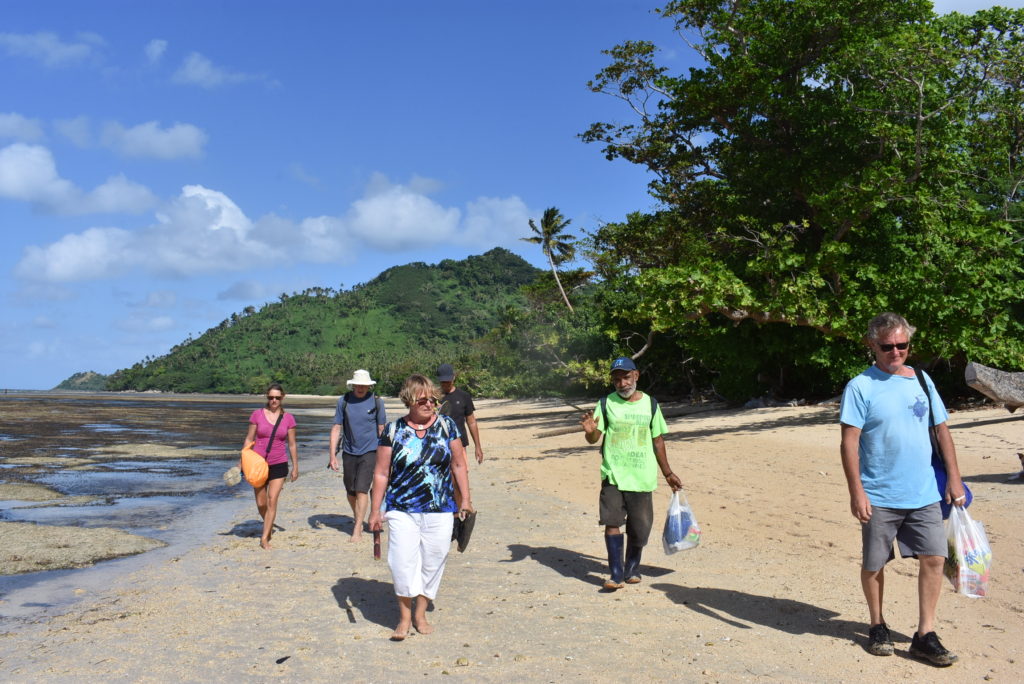
On the Sunday Tui arranged a boat to come from the village to take us to church. Before the service the drums, made of two hollowed-out logs, were beaten to summon the villagers….
…. after the sermon and more wonderful singing, we were again thanked for our visit and wished safe voyages and Hugh spoke again to thank them for their hospitality….
…..we were invited to have lunch afterwards as the minister’s guests.
Tui and Bui and their nephew Sotia visited each yacht in turn, to drink coffee and accept our gifts.
One evening they built a campfire on the beach to which we brought food. Guitar and ukulele were provided by one boat and we sat around the fire eating, chatting, drinking kava and listening to their singing. It was a magical evening.
They made us up baskets of coconut and papaya as gifts.
After six nights at anchor in Little Bay, the strong winds that we had been sheltering from finally abated and our company of five boats gradually headed off. Two went west, two south and we decided to head southwest on our own to explore the less well visited islands of a Totoya and Matuku, 120 miles away. We said goodbye to our new friends and Bui appeared to be close to tears.
We left in the morning for the overnight sail south…..
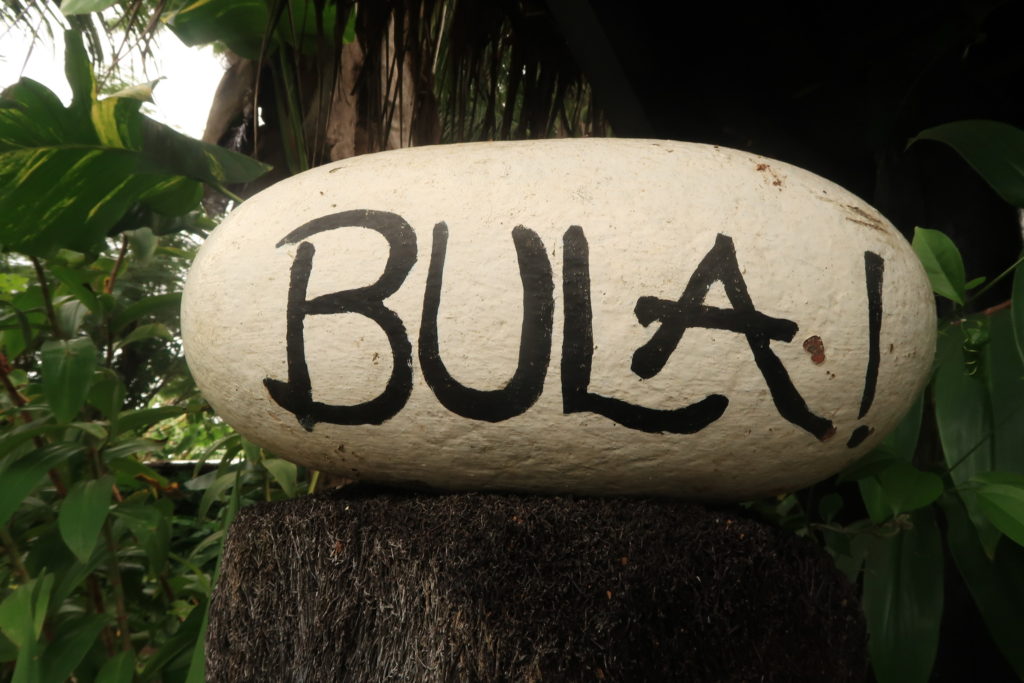
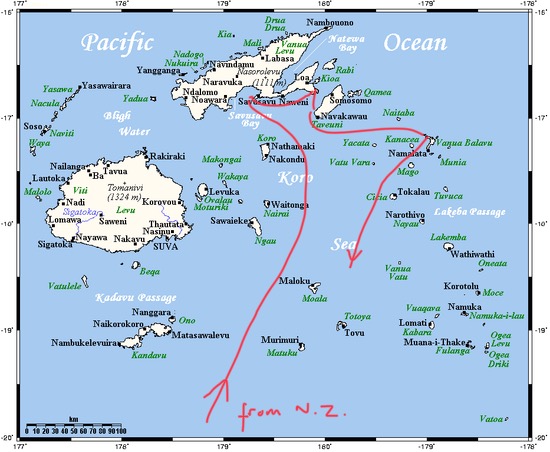

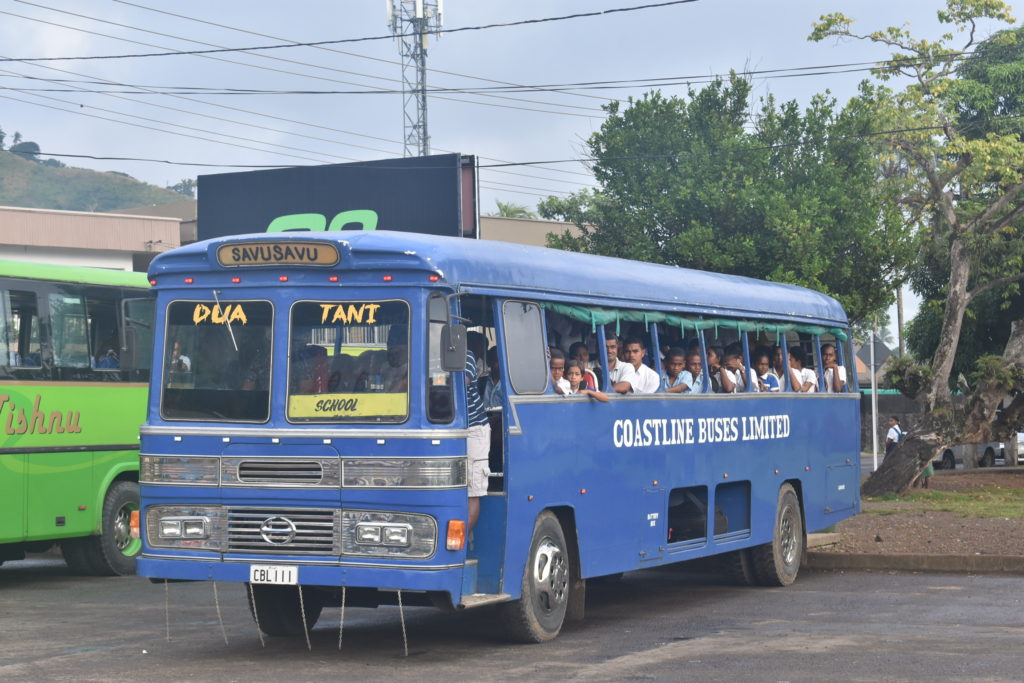
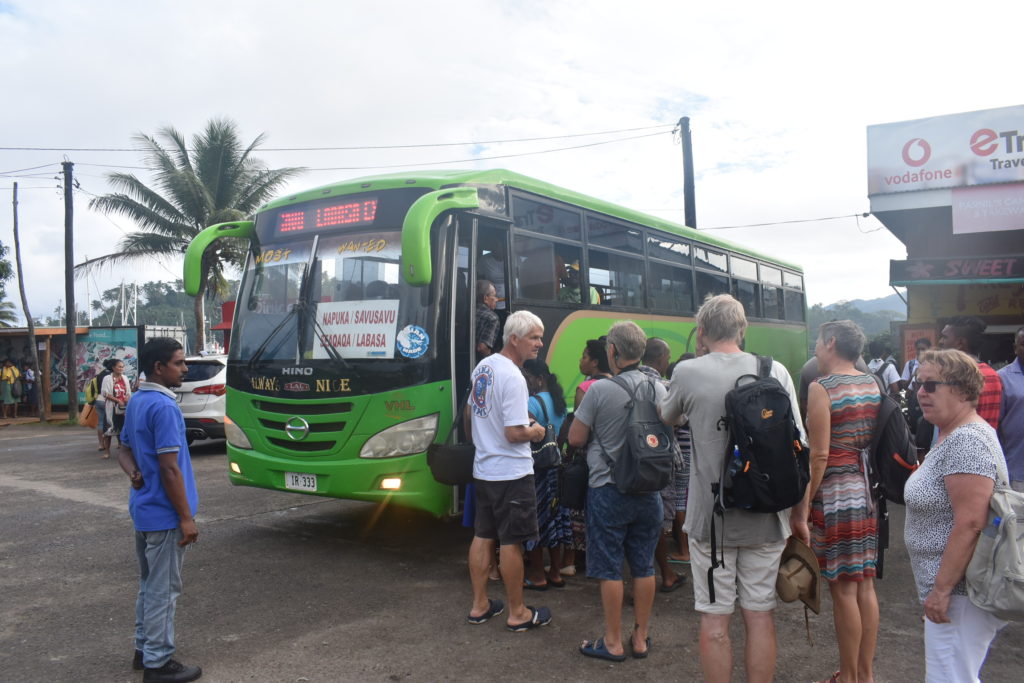
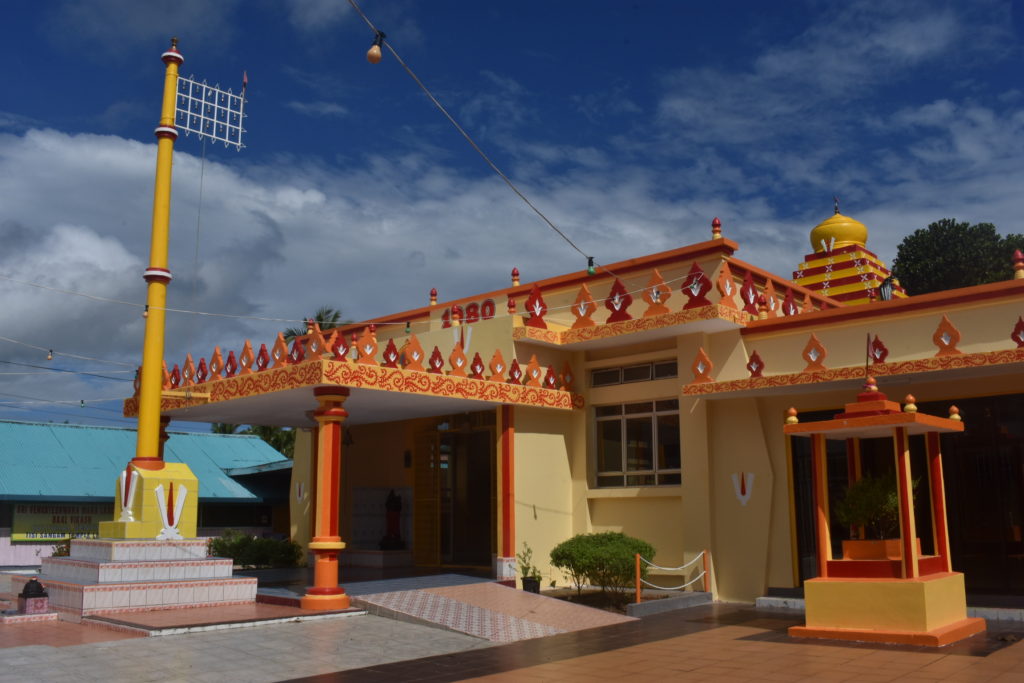

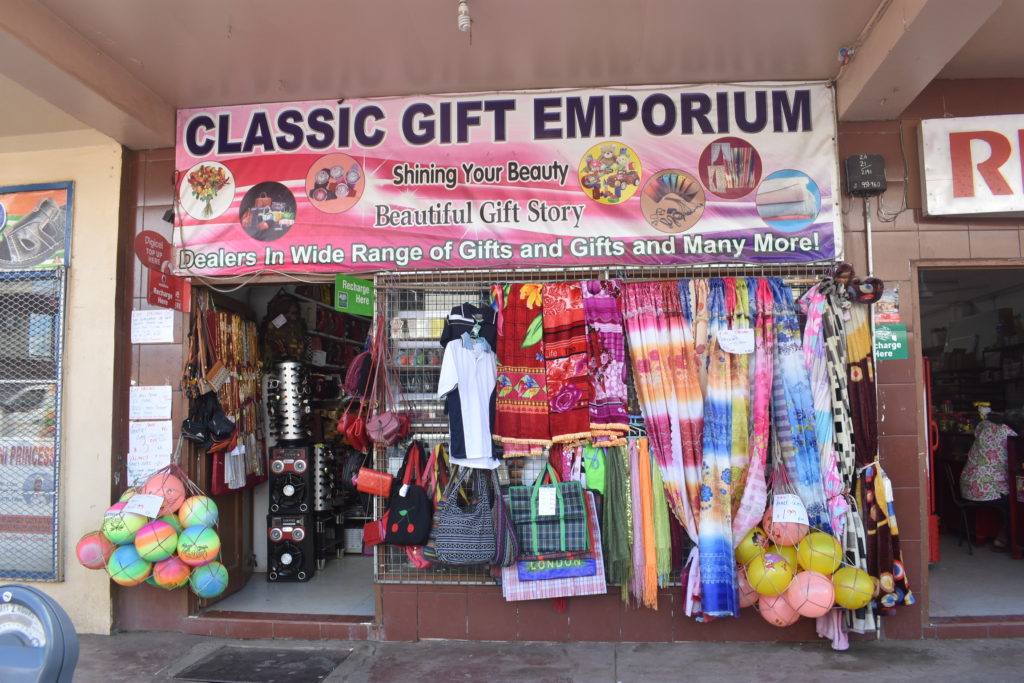
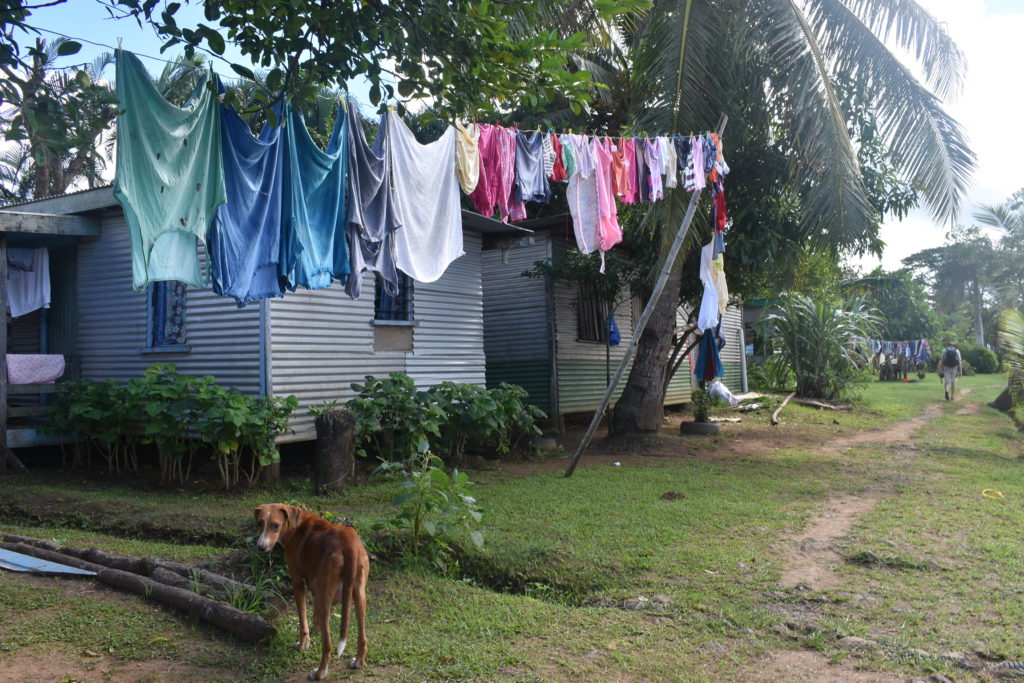
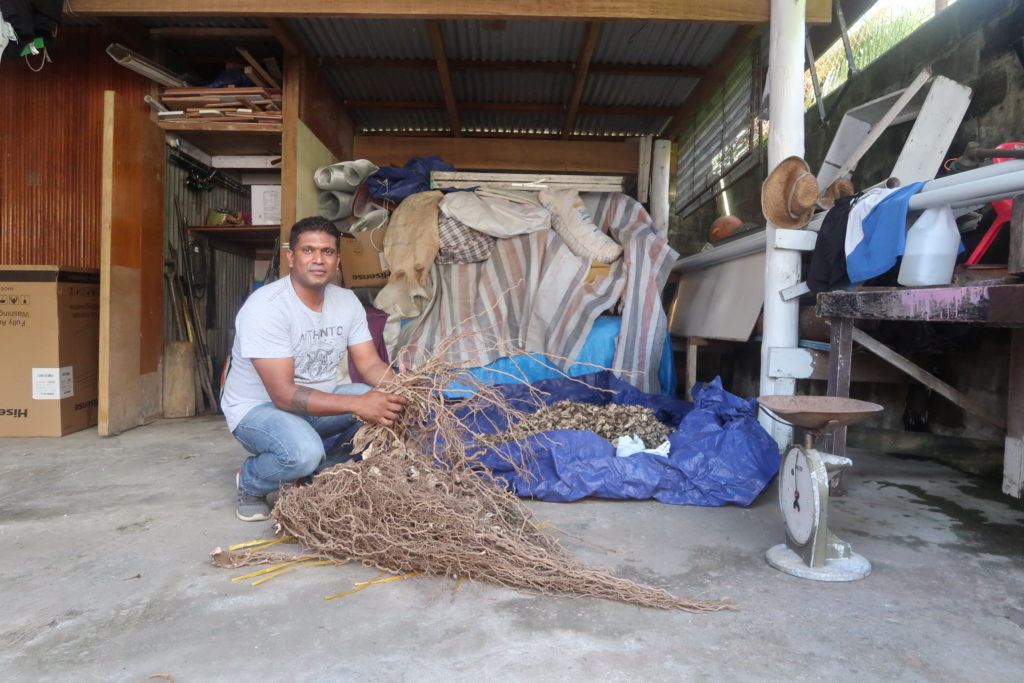
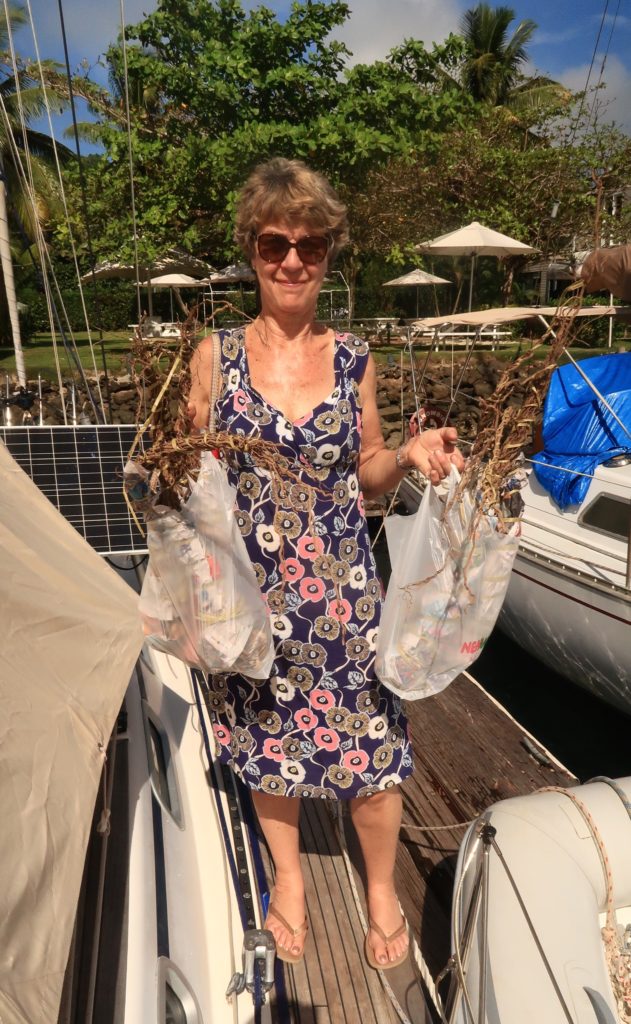
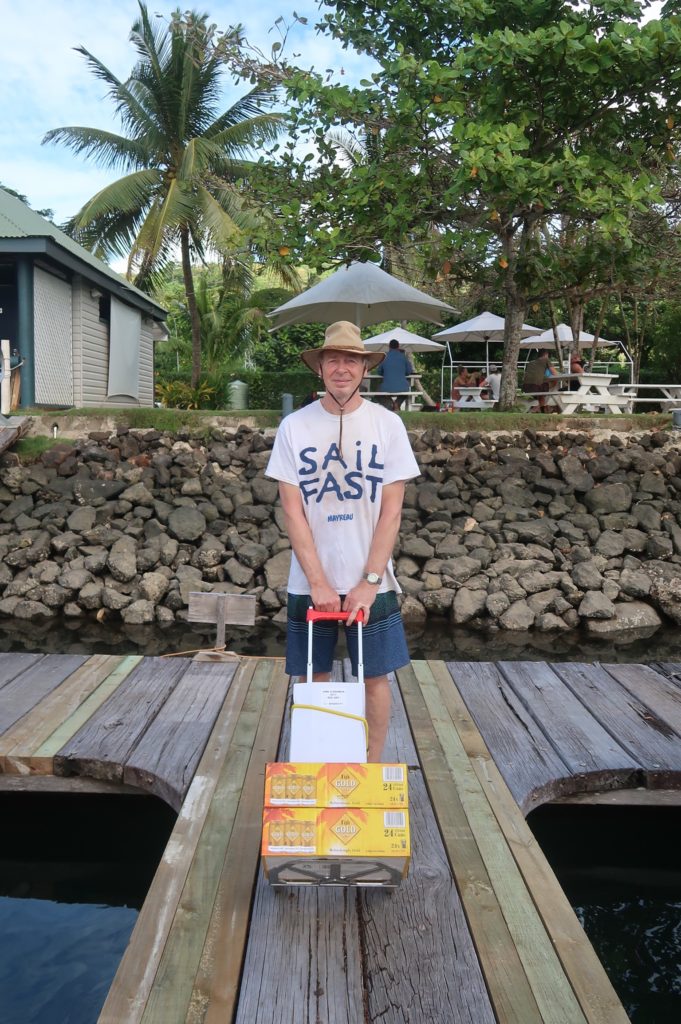
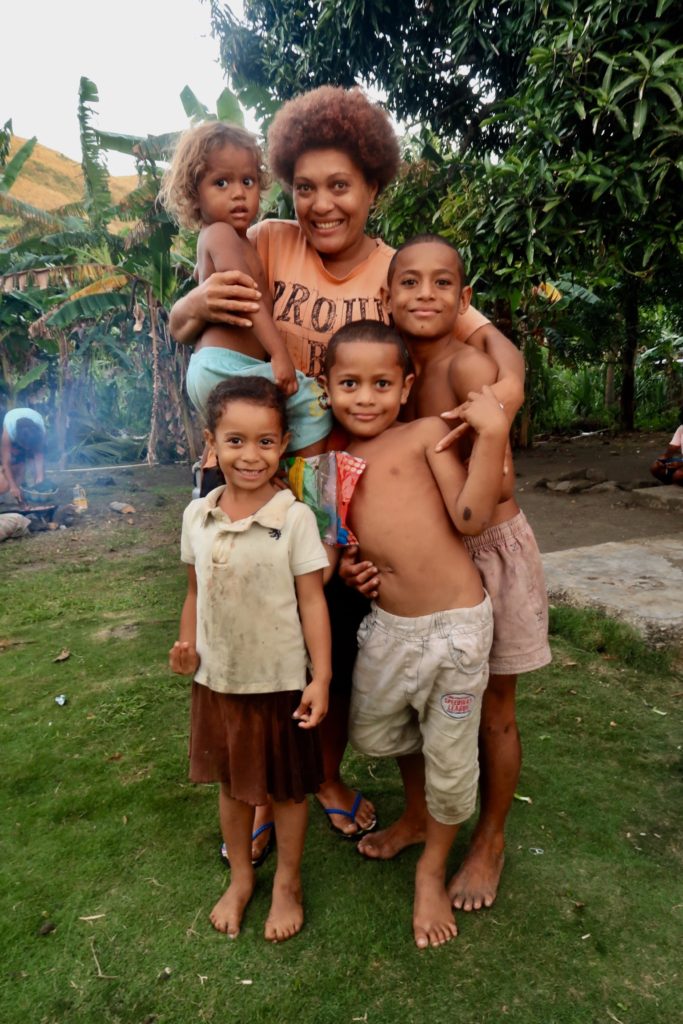
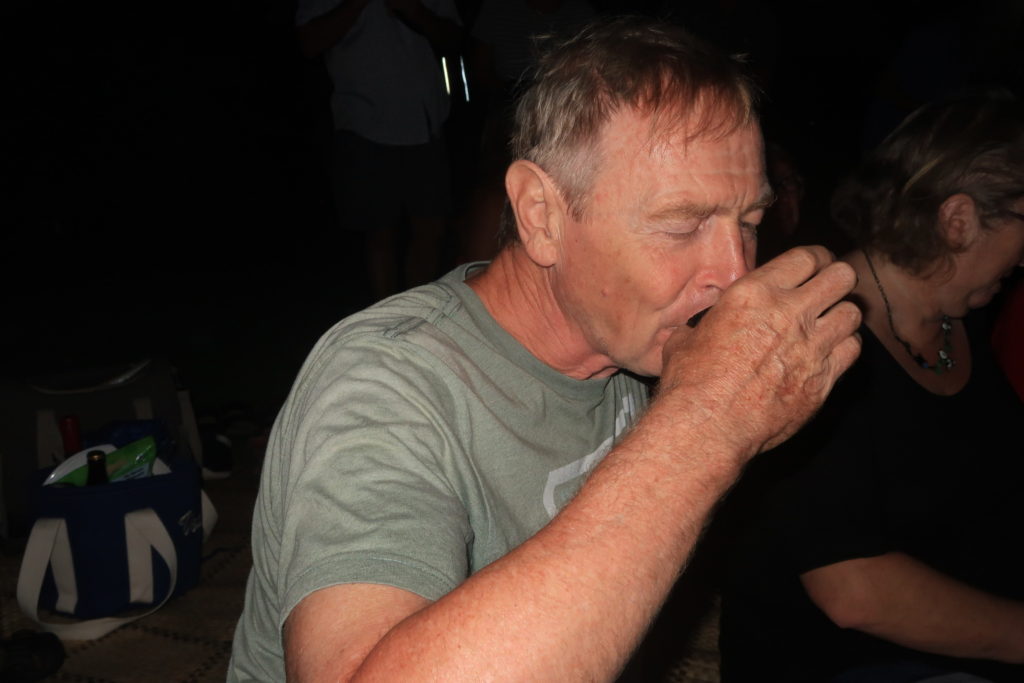
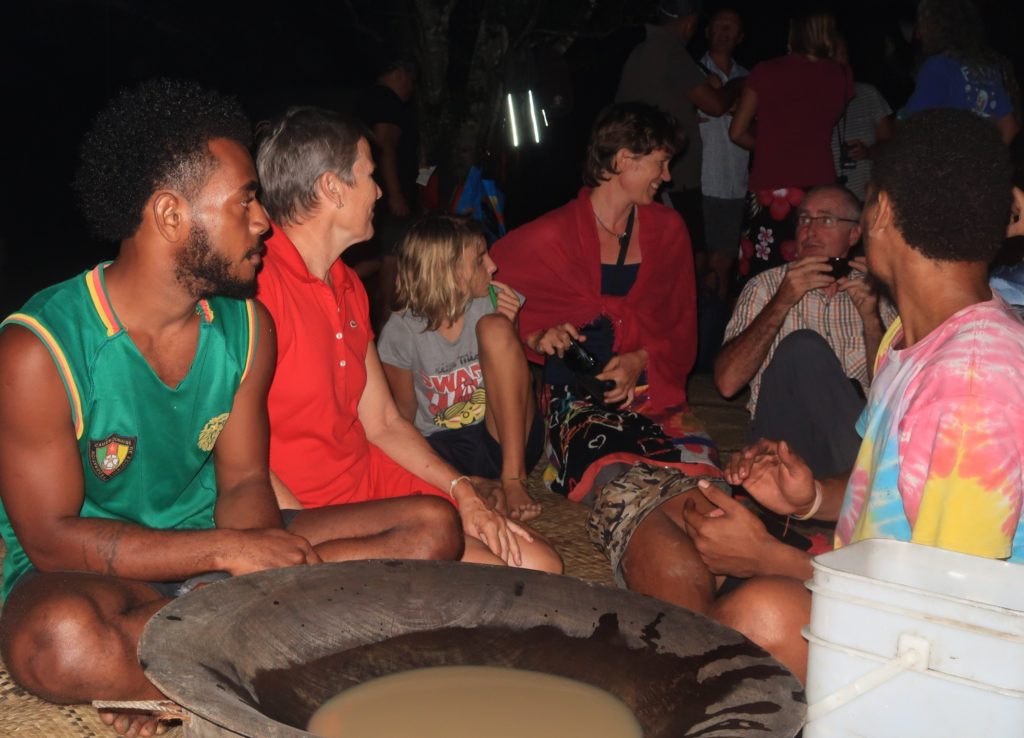
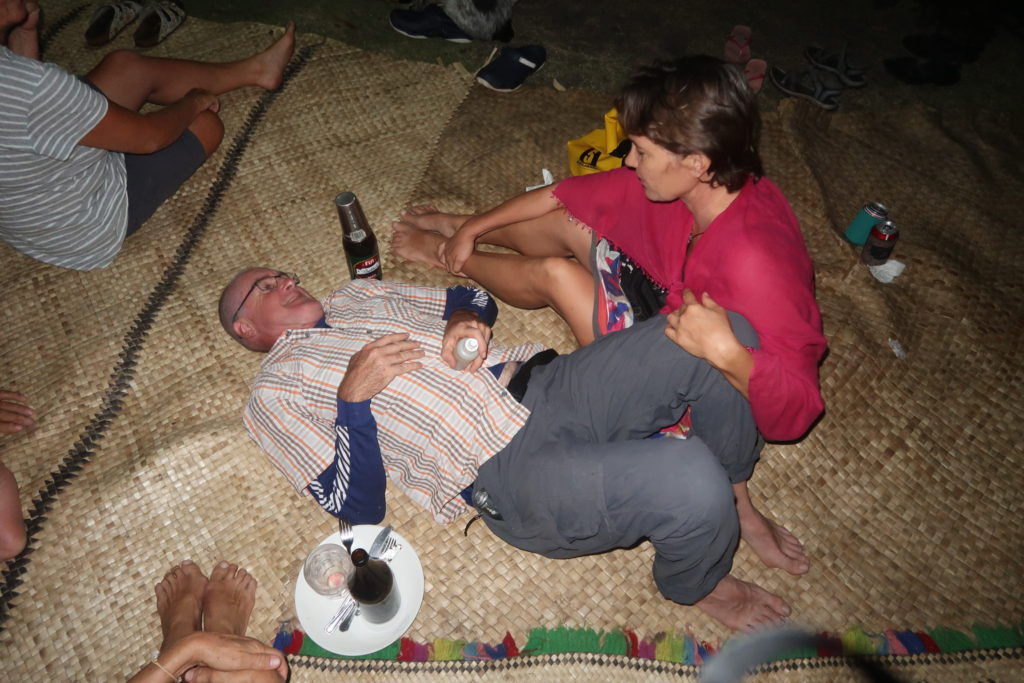
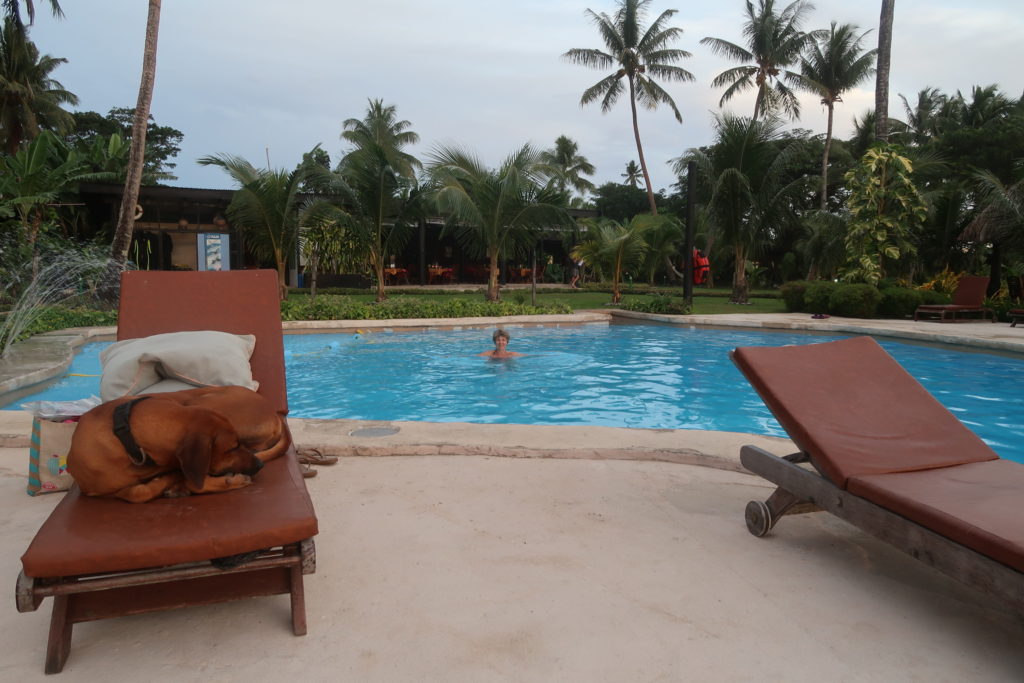
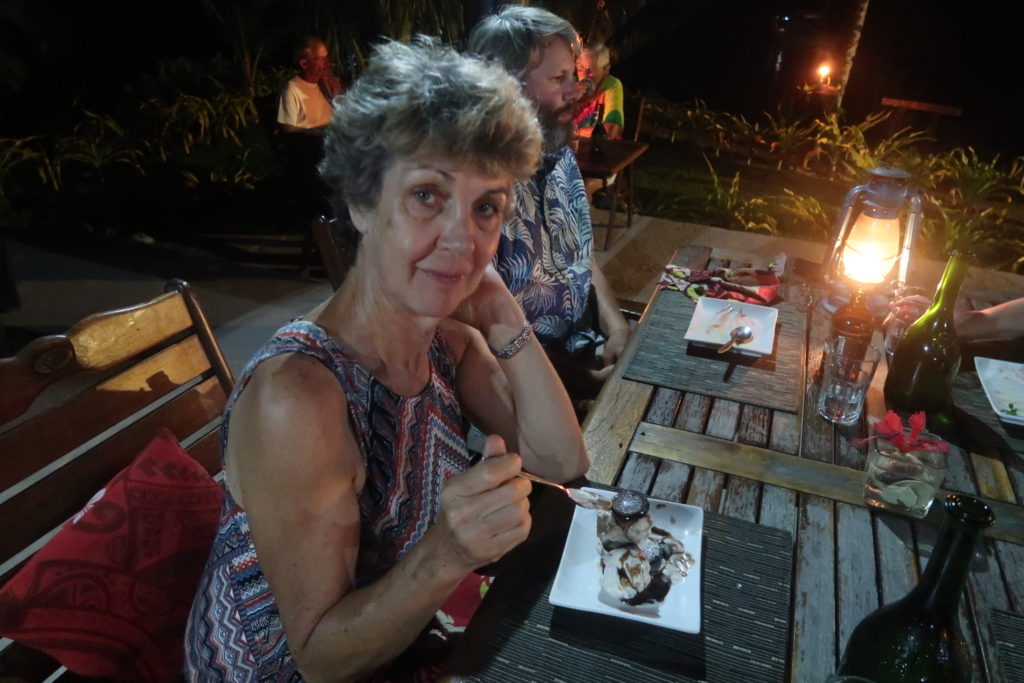
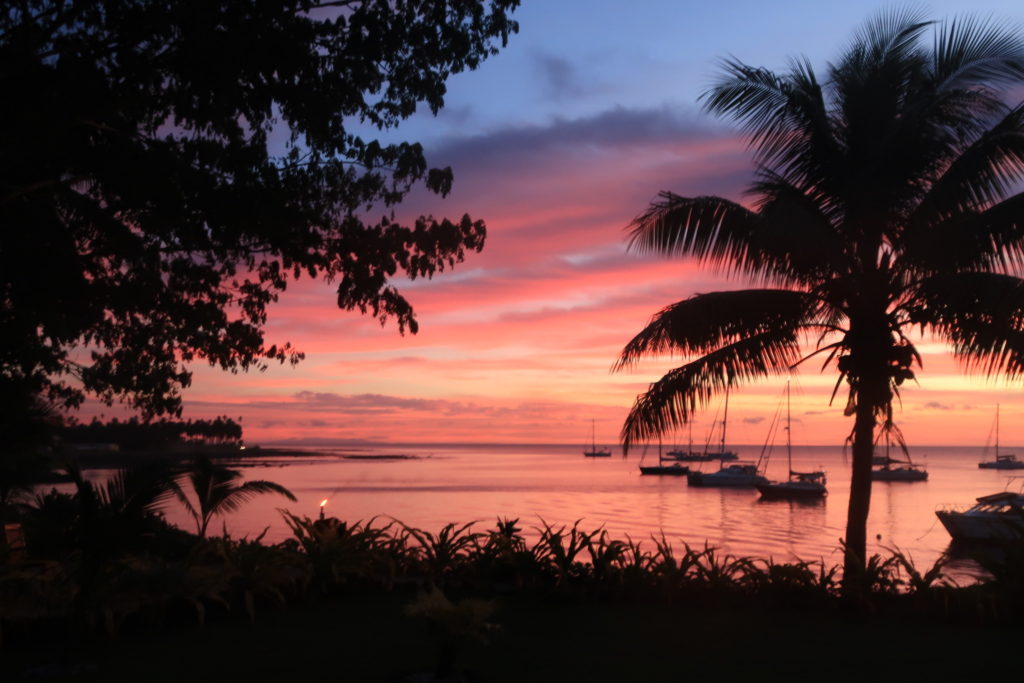
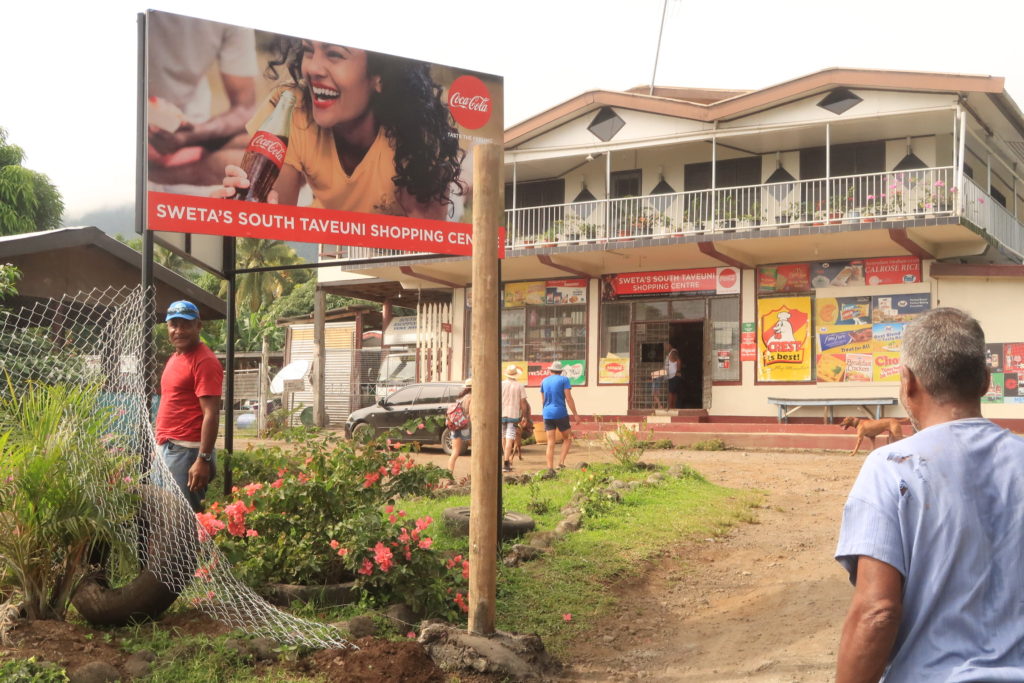
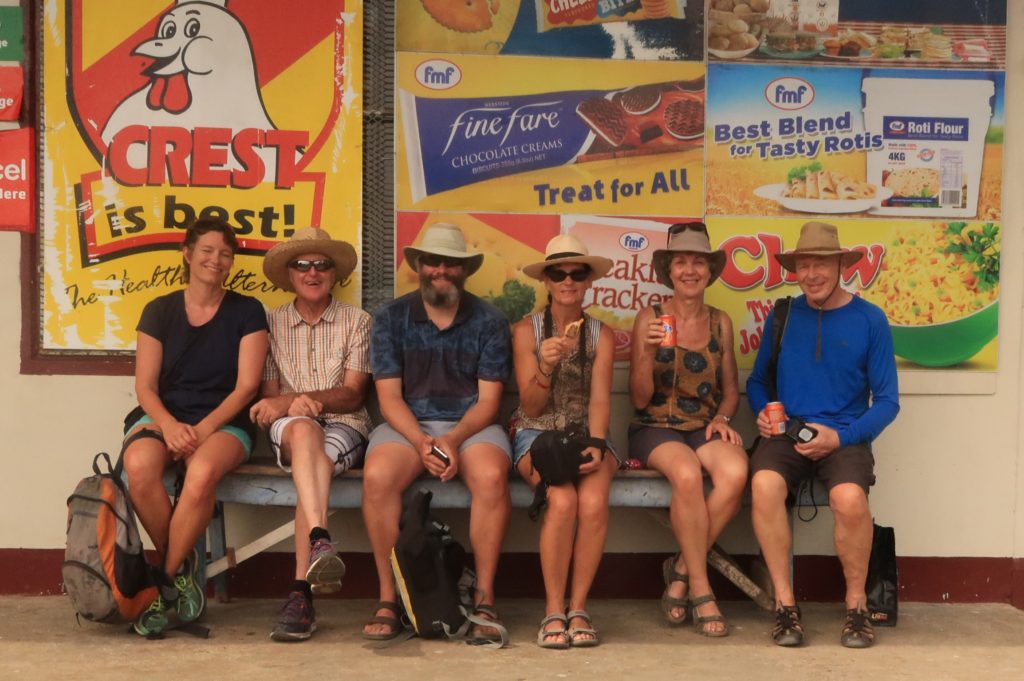
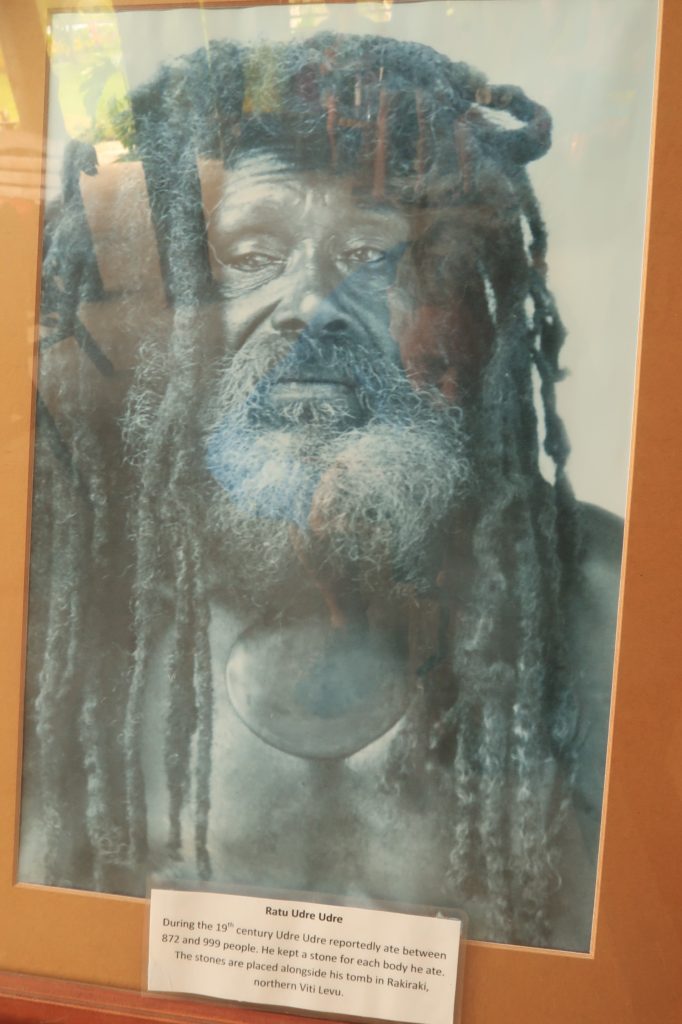
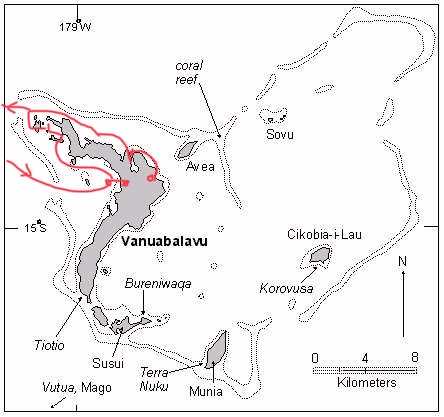
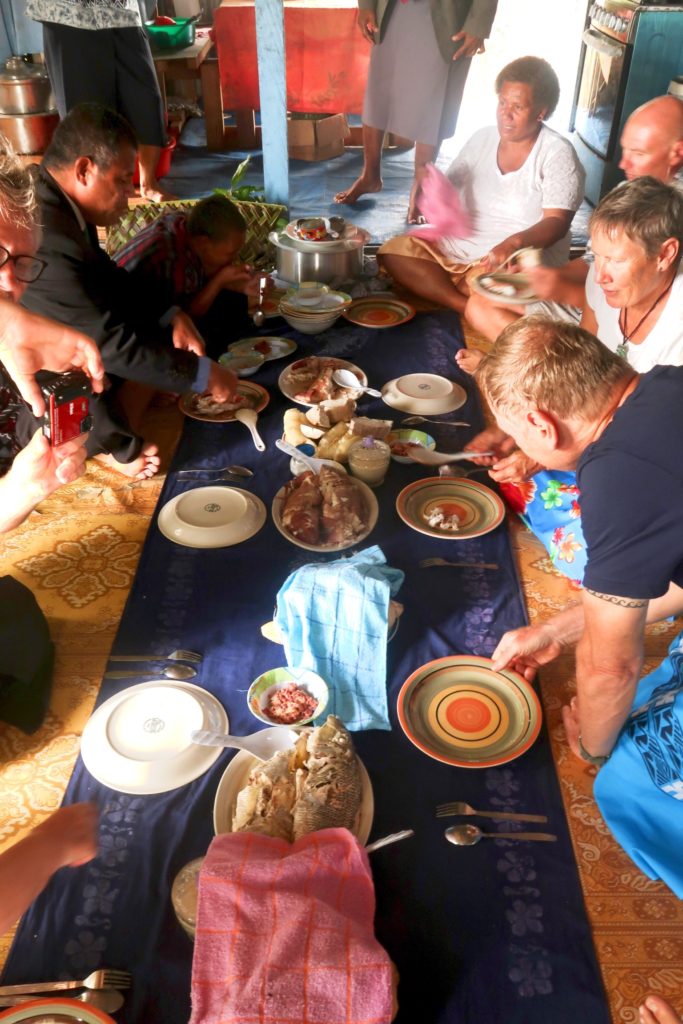
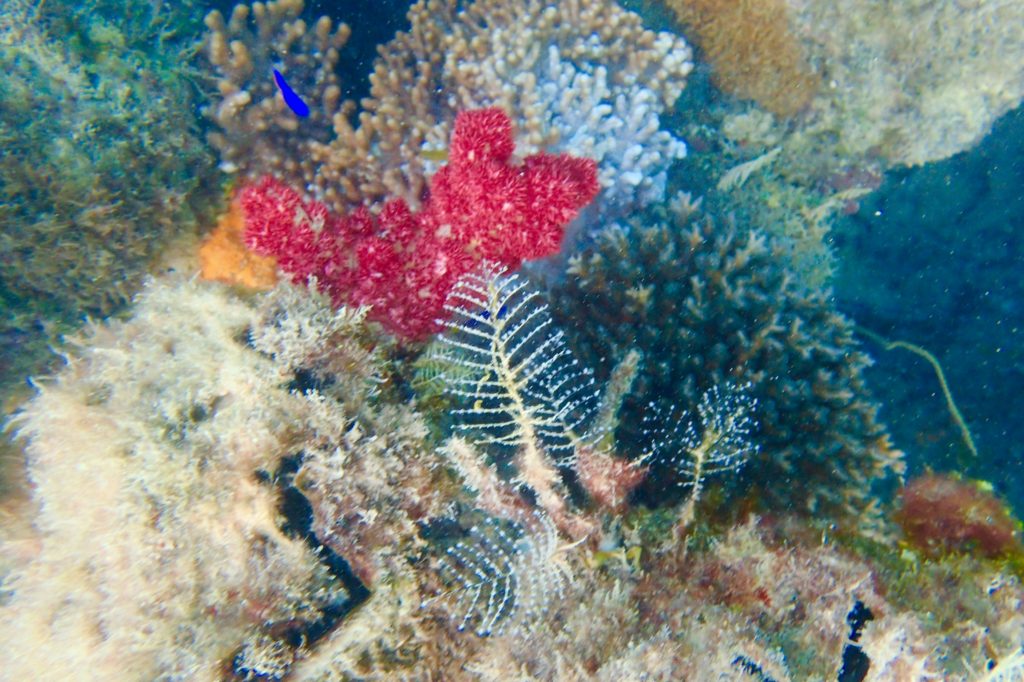
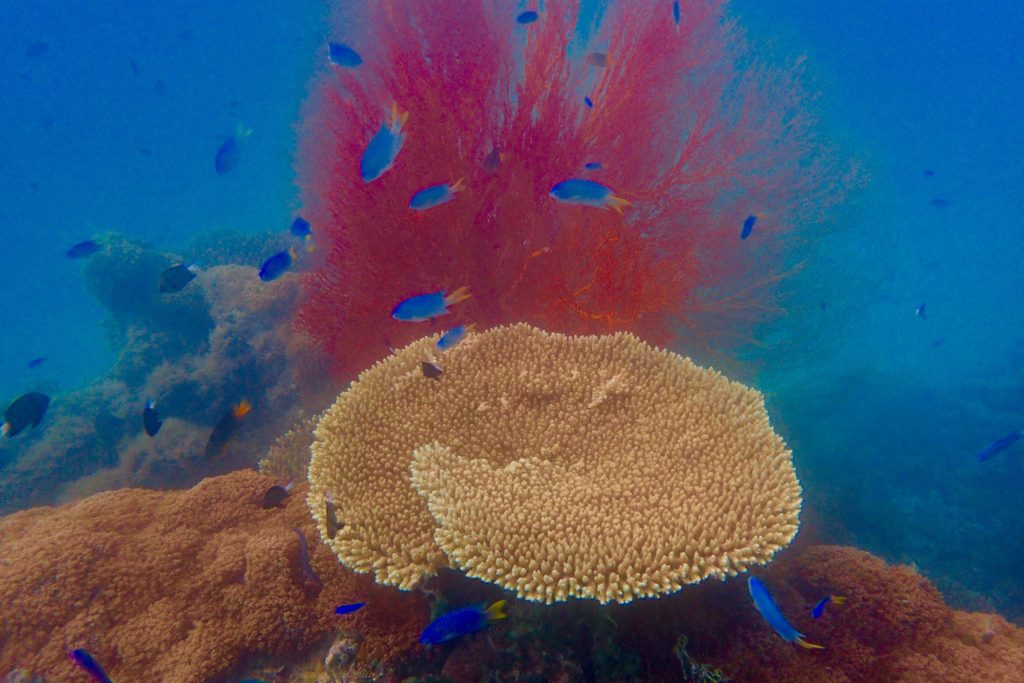
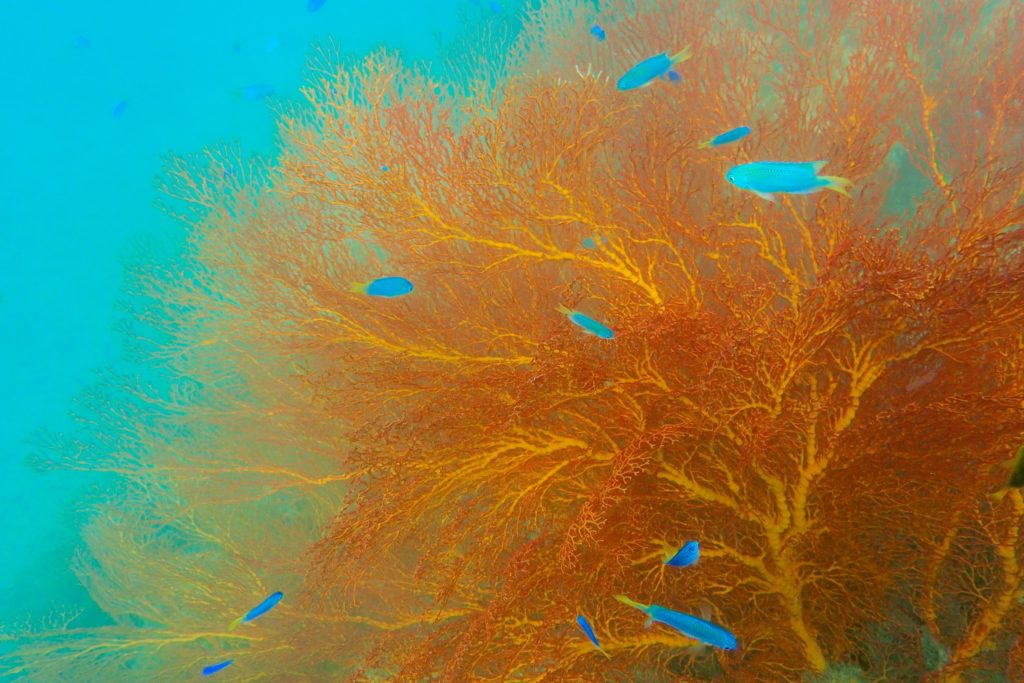
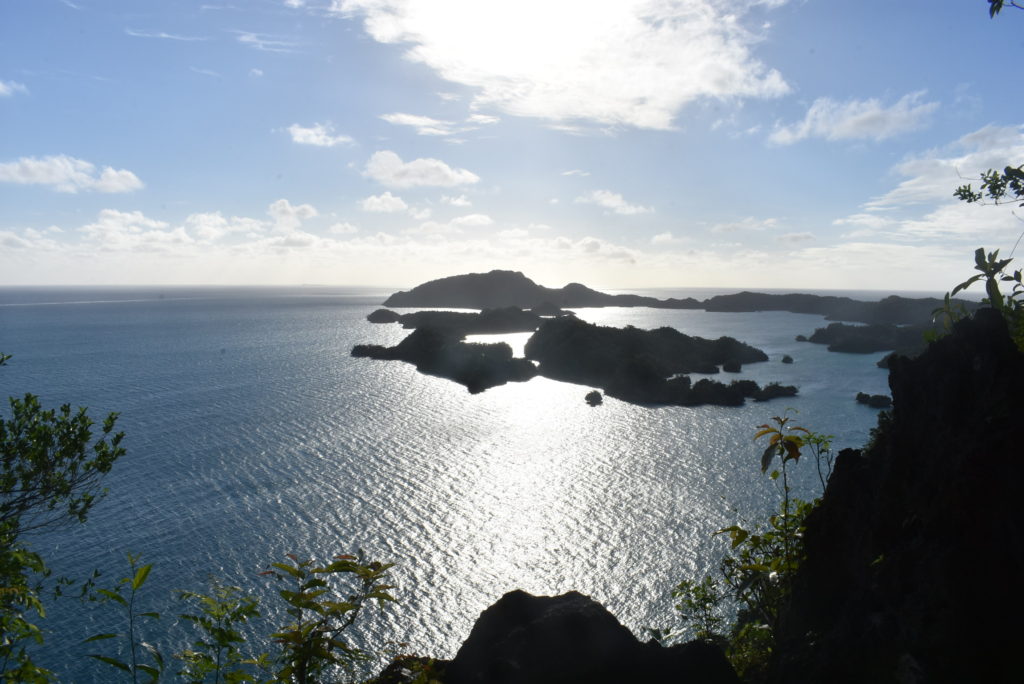
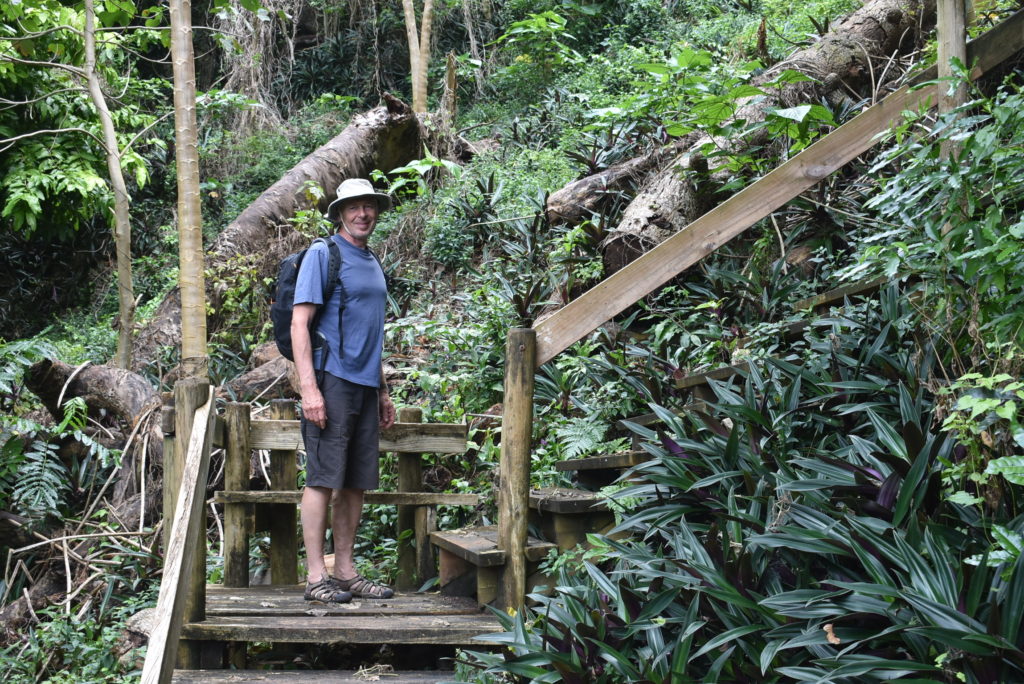
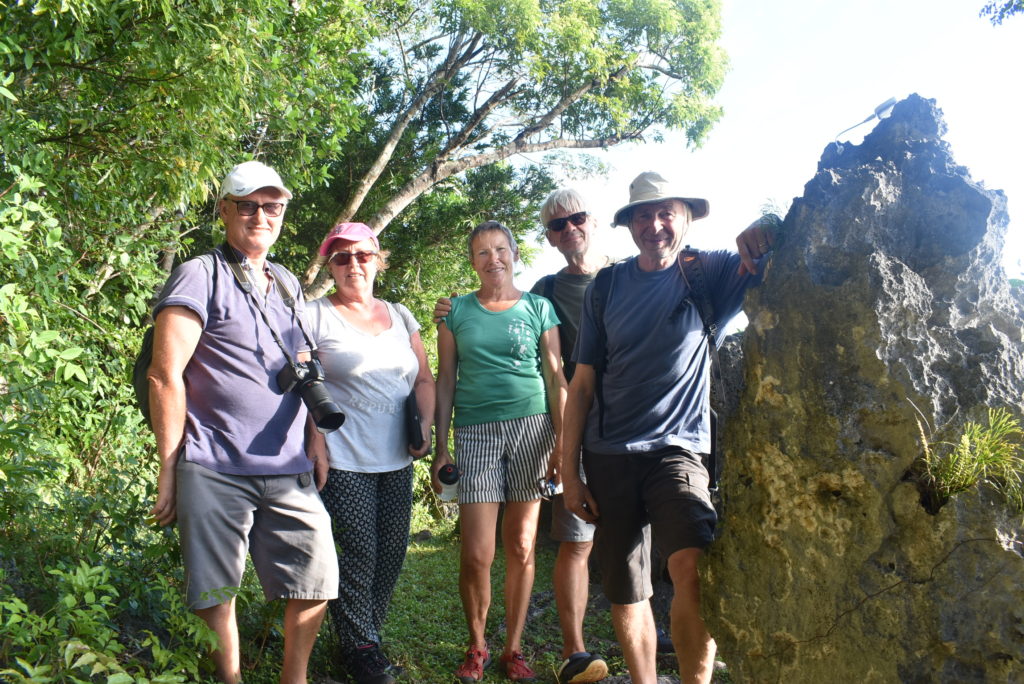
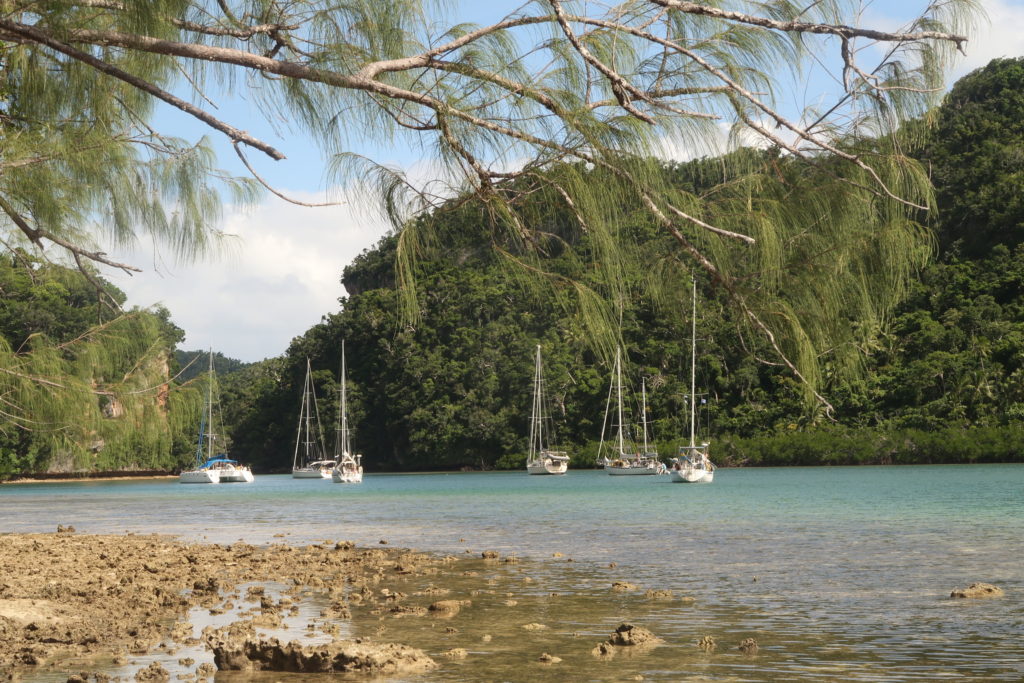
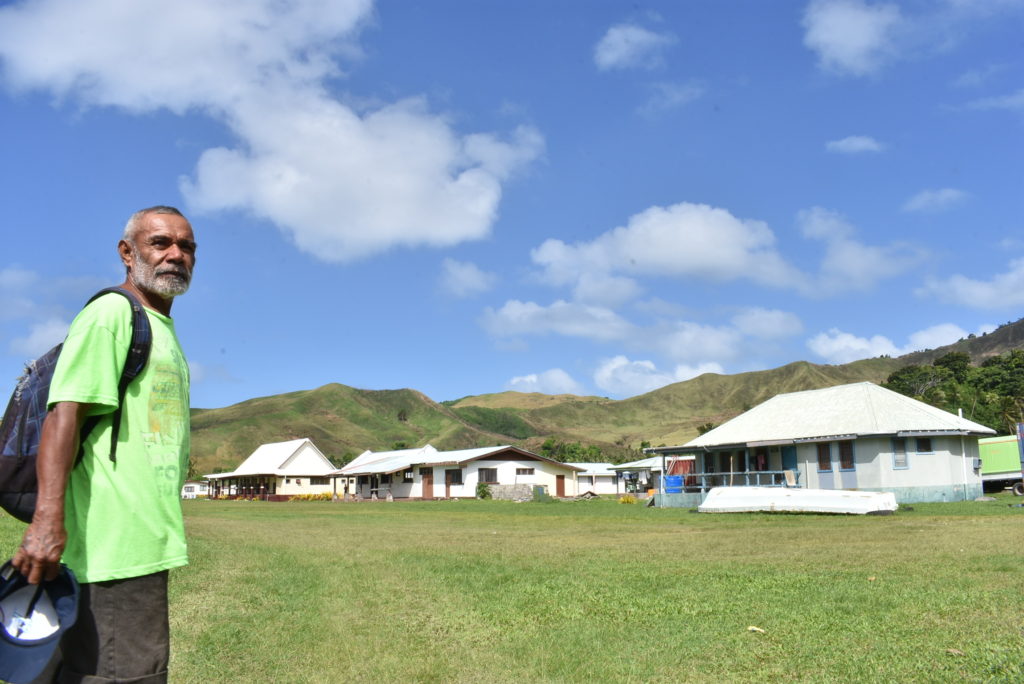
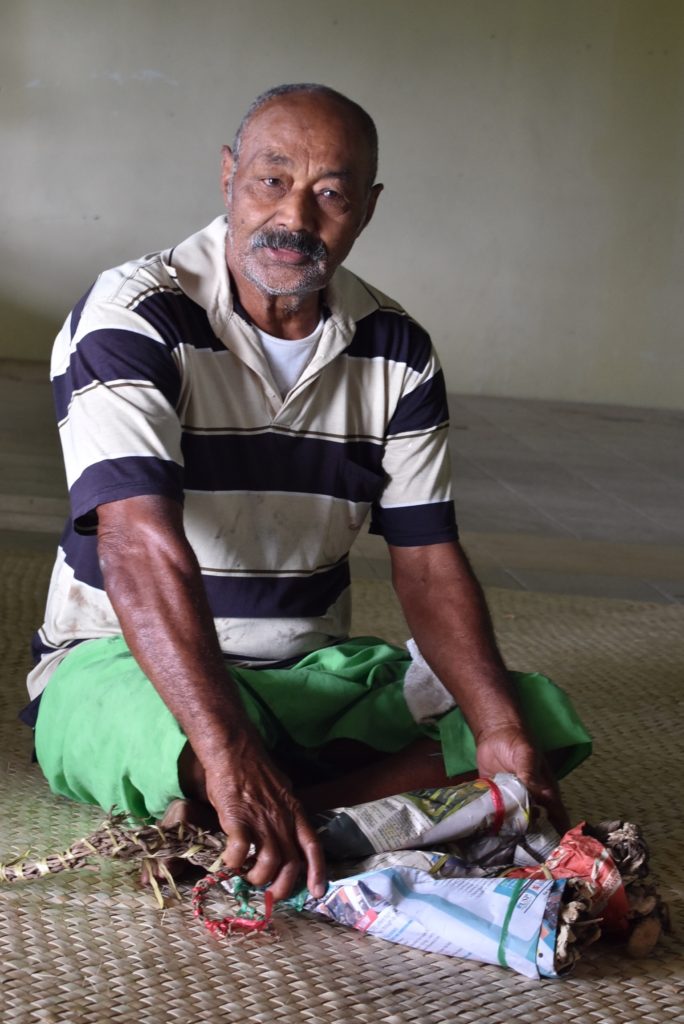
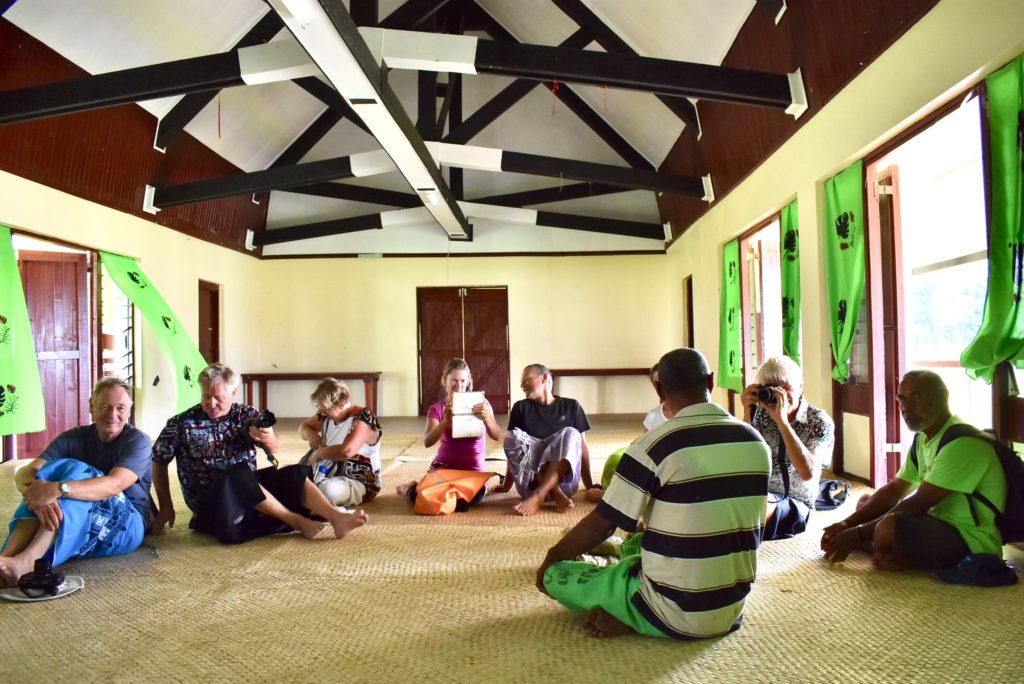
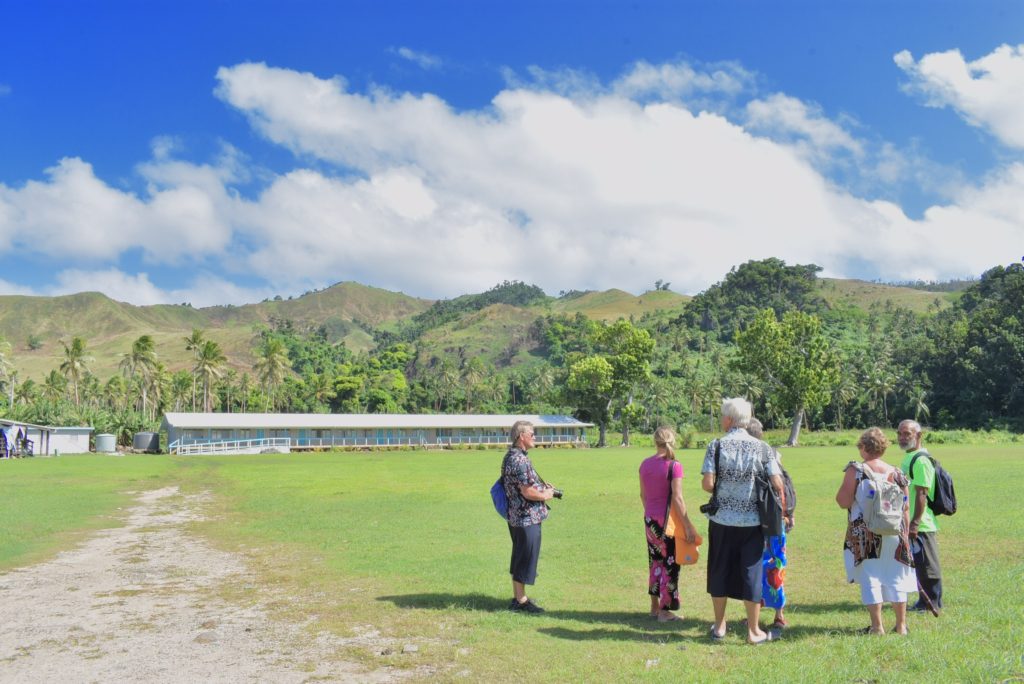
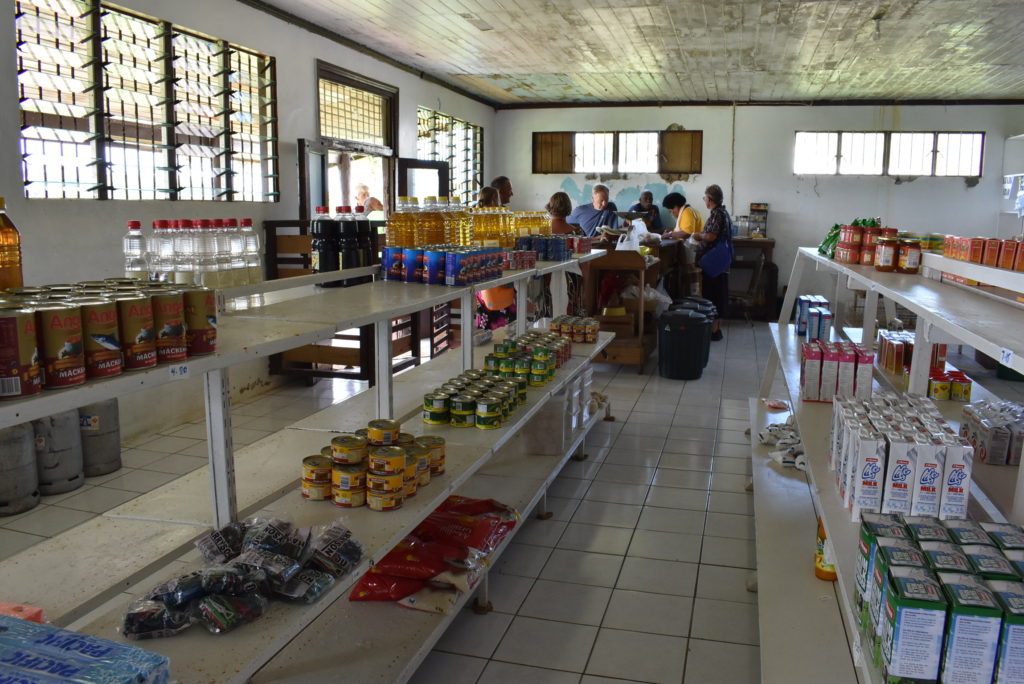
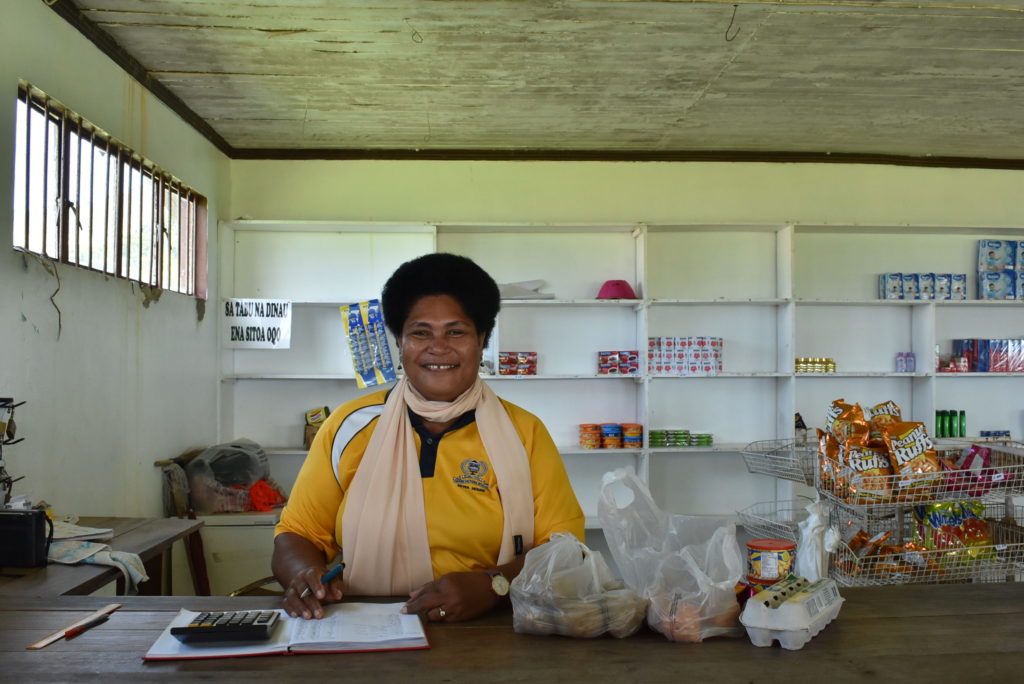
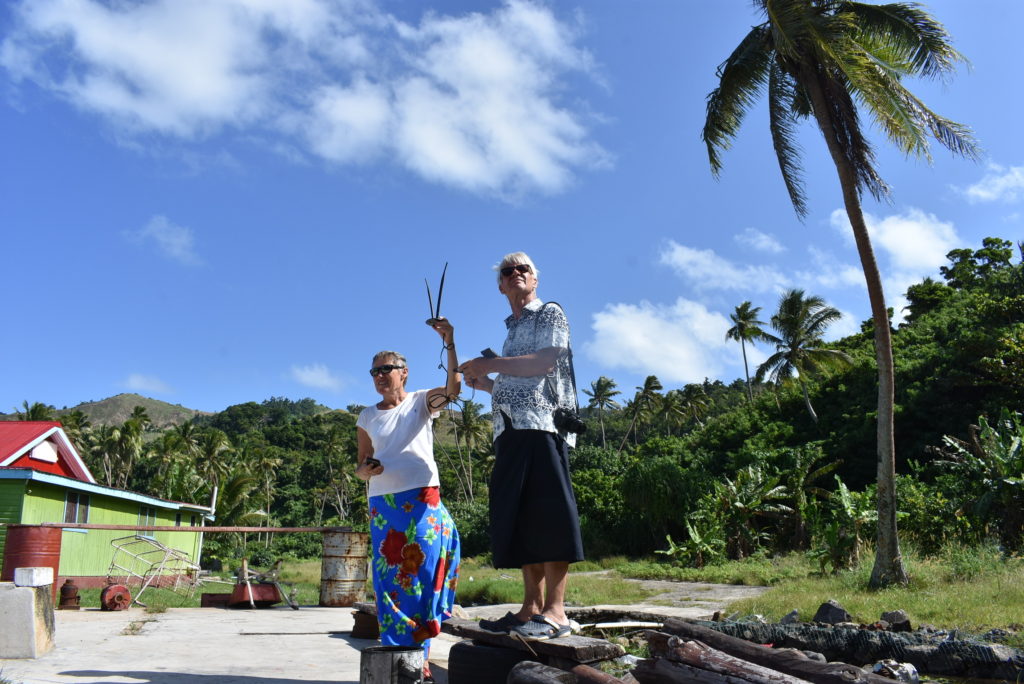
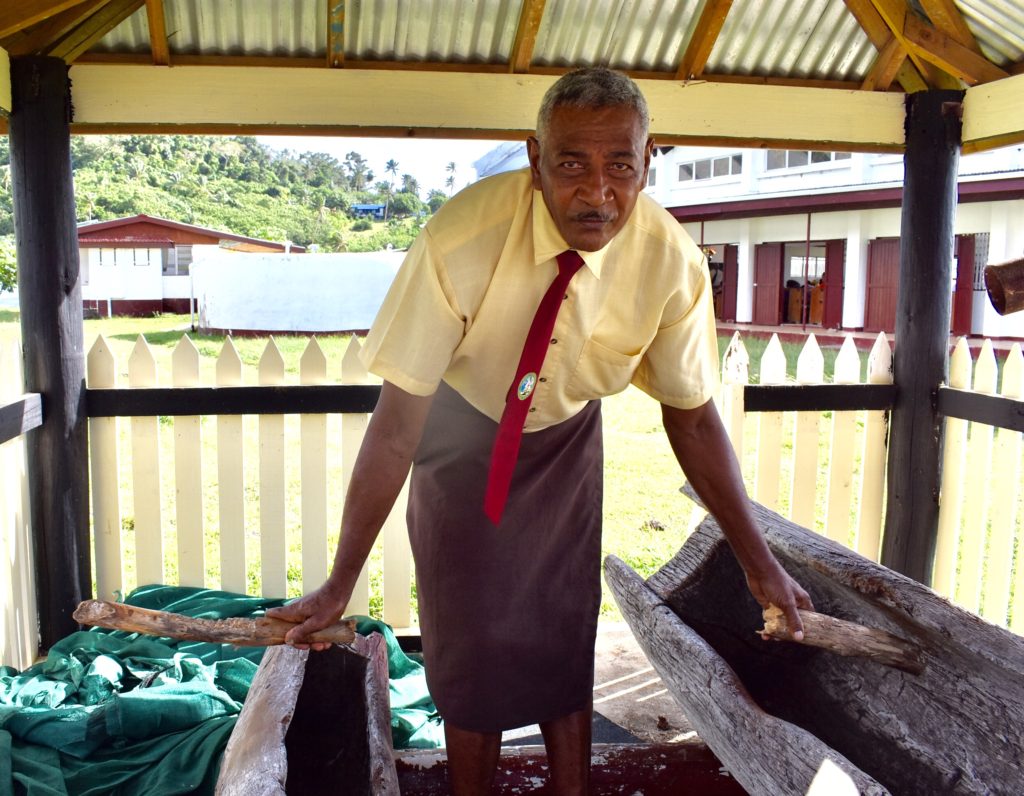
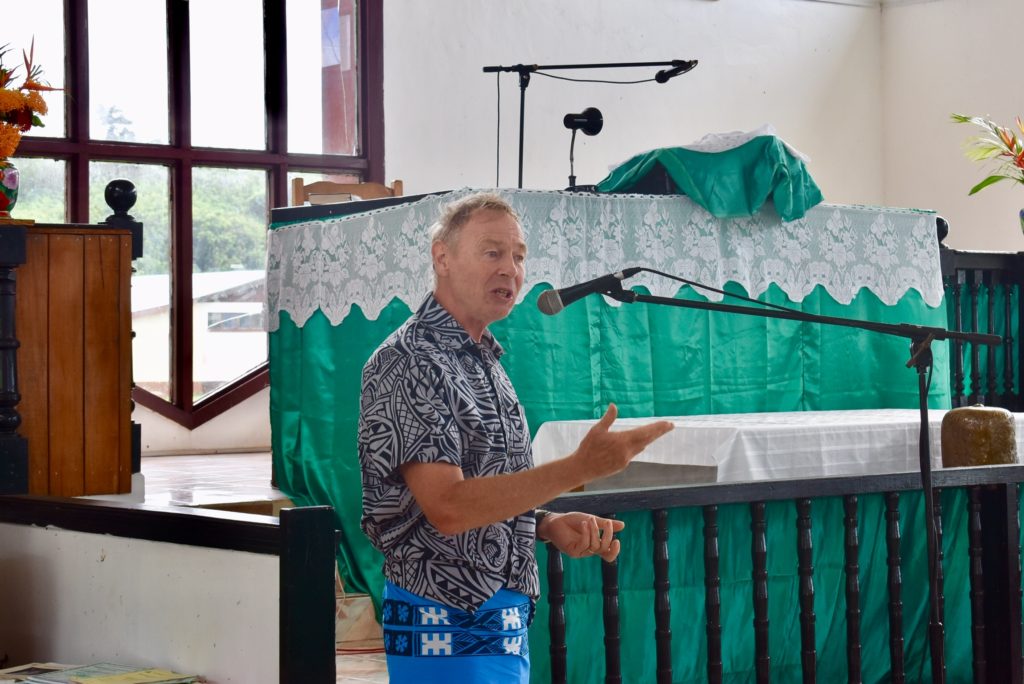
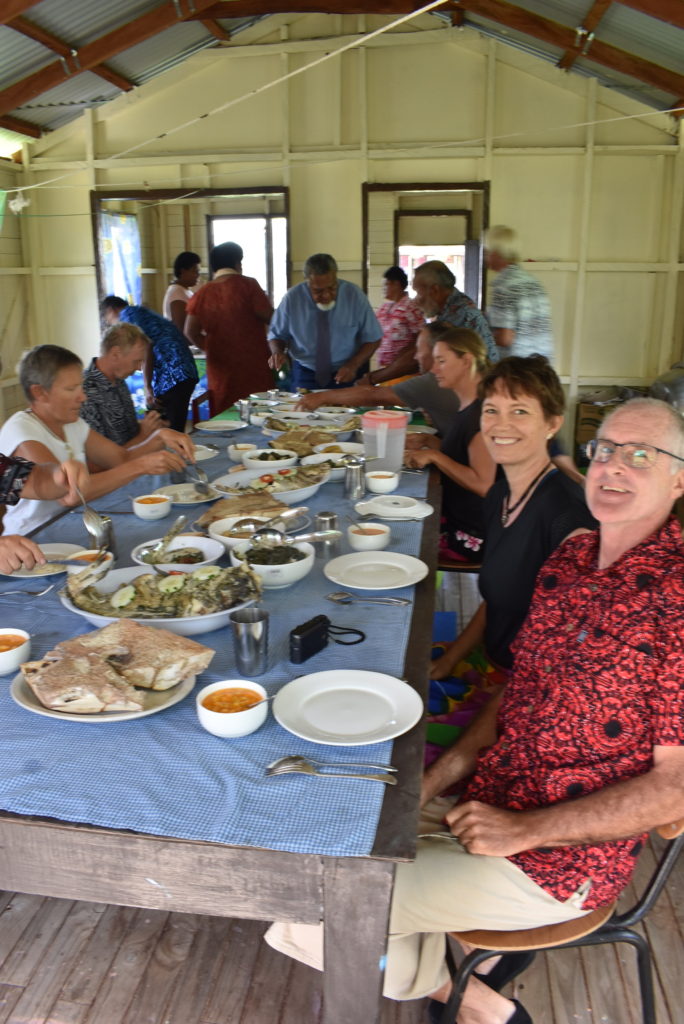
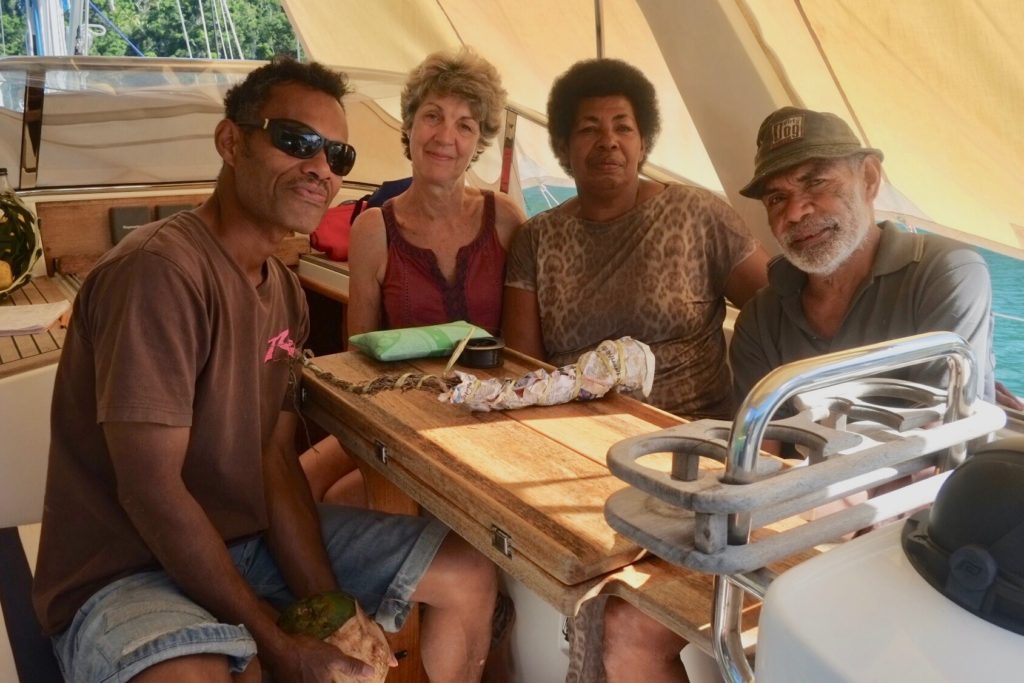
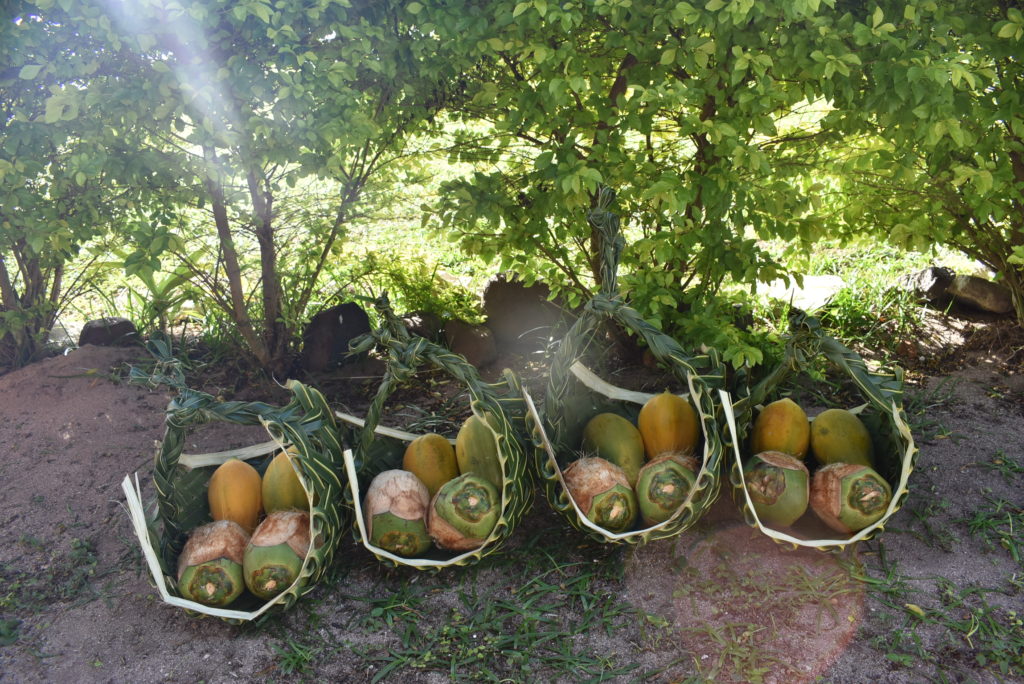
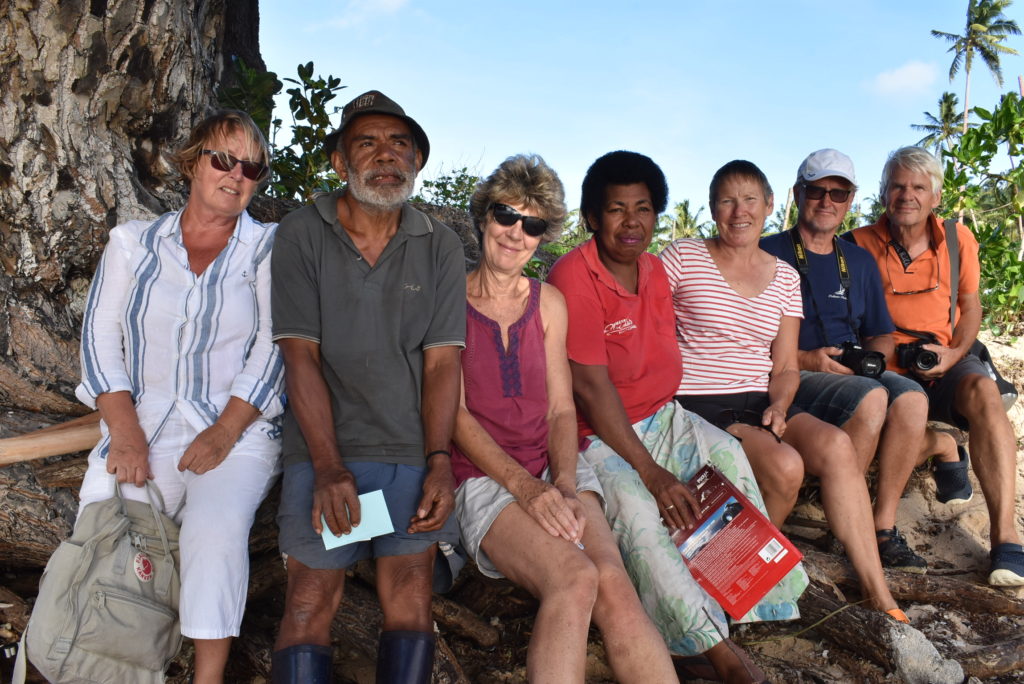
11 Comments
Sue Lucas
July 29, 2018 - 10:58 pmSounds great.
cheryl
August 1, 2018 - 7:22 amYoU are really remains ending me of my elective in Vanuatu.Melanesian people are very special and very friendly.Kava yuk
annie
August 1, 2018 - 8:36 pmThe Fijians are the most cheerful, friendliest people we’ve come across x
annie
August 1, 2018 - 8:35 pmAs do your travels in Mexico x
Karen Rochester
July 29, 2018 - 11:54 pmWonderful photos as ever Annie. It all looks and sounds amazing xx
annie
August 1, 2018 - 8:39 pmThanks Karen.. it’s just a shame it’s so far from home to visit. Alex was hoping to come out but the plane fares were astronomical!
Niki and John
August 1, 2018 - 6:50 amWonderful! Love the blog and the photos .. It reminds me of when we were in Raratonga – especially the description of the Sunday church service with the singing and hellfire sermons with everyone dressed up in white.
Safe sailing x
annie
August 1, 2018 - 8:37 pmThanks.. the sermons do go on a bit but are somehow riveting! x
Paul
August 21, 2018 - 1:00 pmSounds fab , glad all well
Paul
August 21, 2018 - 1:01 pmIt really sounds fab , and glad all well
Angela
September 9, 2018 - 2:07 amGreat Blog Annie, took us a while to have digicel reception finally… Hope you have a good time in Vanuatu and a safe sailing!